Affiliate disclosure: This post may contain affiliate links. Please see our Privacy Policy.
Weeds with white flowers are everwhere, and some of the most prolific plants in the US bear white flowers. Beloved by pollinators, fabric artists, soap makers, and foragers alike, there’s something for everybody among the pale blossoms on these plants!
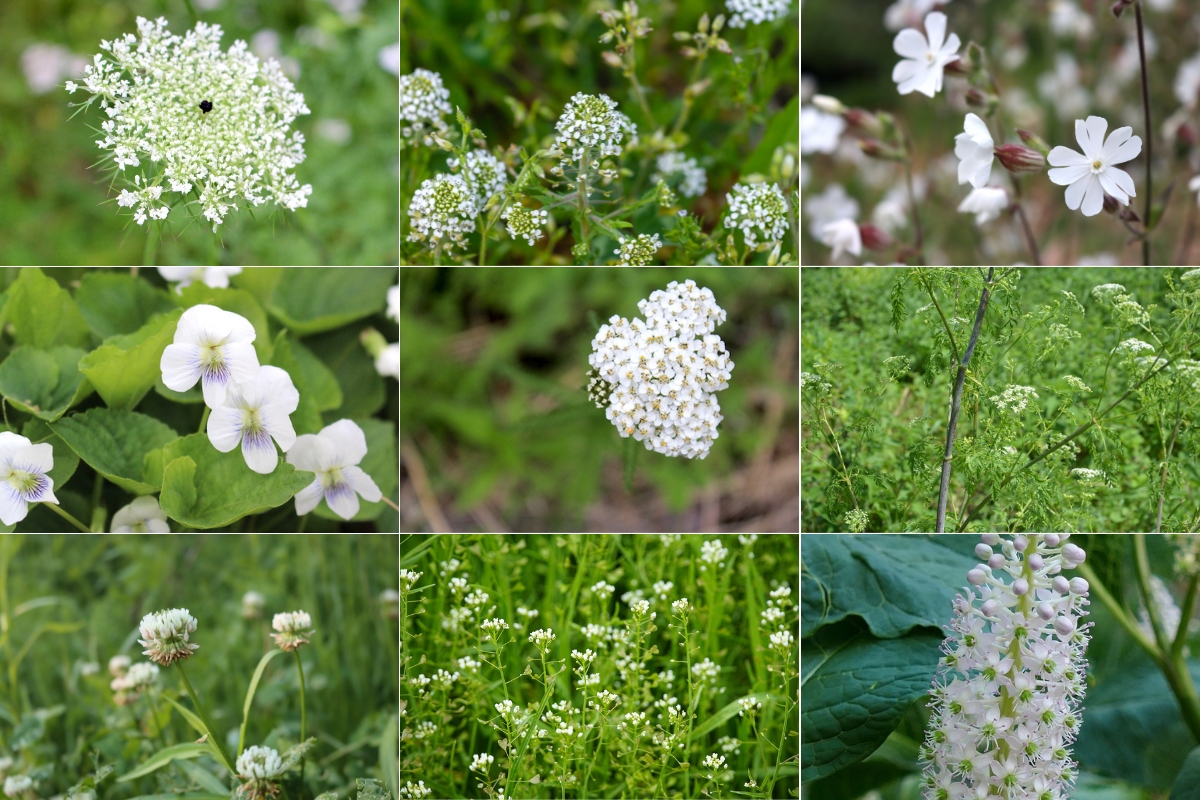
Table of Contents
- Weeds with White Flowers
- Bugleweeds (Lycopus spp.)
- Bishop’s Weed (Aegopodium podagraria)
- Black Nightshade (Solanum nigrum)
- Bugle Vine (Calystegia sepium)
- Canadian Horseweed (Conyza canadensis)
- Carpetweed (Mollugo verticillate)
- Coat Buttons (Tridax procumbens)
- Common chickweed (Stellaria media)
- Corn Spurry (Spergula arvensis)
- Cow Parsley (Anthriscus sylvestris)
- Feverfew (Tanecetum parthenium)
- Field bindweed (Convolvulus arvensis)
- Fleabane (Erigeron sp.)
- Garden valerian (Valeriana officinalis)
- Hairy Bittercress (Cardamine hirsuta)
- Himalayan Blackberry (Rubus armeniacus)
- Japanese Hedge Parsley (Torilis japonica)
- Japanese Knotweed (Polygonum cuspidatum)
- Jimsonweed (Datura stramonium)
- Lily of the Valley (Convallaria majalis)
- Mayweed (Anthemis cotula)
- Meadow Death Camas (Zigadenus venenosus)
- Meadow Sweet (Filipendula ulmaria)
- Mouse Ear Chickweed (Cerastium)
- Northern Bedstraw (Galium aparine)
- Oxeye Daisy (Leucanthemum vulgare)
- Plantain Herb (Plantago sp.)
- Poison Hemlock (Conium maculatum)
- Pokeweed (Phytolacca americana)
- Queen Anne’s Lace (Daucus carota)
- Quickweeds (Galinsoga sp.)
- Shepherd’s Purse (Capsella bursa-pastoris)
- Silverrod (Solidago bicolor)
- Virginia Pepperweed (Lepidium virginicum)
- White Campion (Silene spp.)
- White Clover (Trifolium repens)
- Whitlow Grass (Draba verna)
- Wild violet (Viola spp.)
- Yarrow (Achillea millefolium)
- Wild Weed Identification Guides
This article is written by Morgan Hyde, a former reference librarian from Arizona. Working for the library refined her passion for learning and deep research—a passion that began in her rural AZ upbringing and continues in her work as a writer and editor. If it’s something she can do on her own, it’s something wants know about.
Incredibly common in the US, many of the flowers listed here are native—they grow so aggressively they’ve been listed as noxious, invasive, weedy, and are commonly seen as undesirable. However, these are beautiful plants (the non-natives were, without exception, brought over as ornamentals) and are critical to their local ecosystems. Songbirds, bees, and moths all rely on their seeds and nectar to survive.
It shouldn’t be any surprise, then, that these plants are useful for more than their looks. Most are edible, and almost every single one is medicinal in some way (even if only historically used). A few are even helpful in insect control.
When not being consumed, soaps and fabric dyes can be sourced from a few of these plants. They’re even useful in amending your soil and in giving your compost bin a boost. Take a look—it’s likely that some of the new white blooms that pop up in your yard each might be helpful to you.
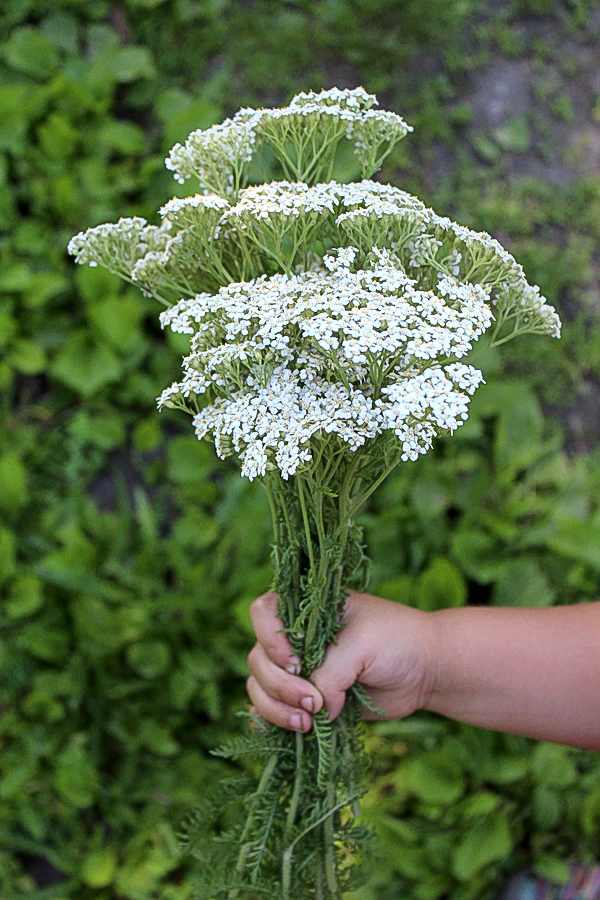
Weeds with White Flowers
You’ll find most of the plants on this list growing along roadsides, near ditches, in large crowds, and generally anywhere the soil has been disturbed—hence the reason they’ve been classified as weeds. A few, though, aren’t aggressive, don’t push out other plants, nor are they difficult to control. Instead, they’re considered weeds for their toxicity. It’s important to note that while the plants below come with ominous warnings, they may still be useful in other ways.
A few plants you’ll want to pay careful attention to include: Coat Buttons (Tridax procumbens), Silverrod (Solidago bicolor), and White Campion (Silene spp.). These are all considered mild to moderately toxic and have parts that shouldn’t be eaten.
Of special concern, however are: Black Nightshade (Solanum nigrum), Jimsonweed (Datura stramonium), Lily of the Valley (Convallaria majalis), Meadow Death Camas (Zygadenus venenosus), Poison Hemlock (Conium maculatum), and Pokeweed (Phytolacca americana). All of these have parts considered poisonous and should be approached with caution. I’d recommend handling them with gloves and long sleeves on as many can cause a reaction on contact, not just when eaten.
I’ll take a moment to underline that, not only is Poison Hemlock considered a dangerous plant, it can be easily confused for many edible plants (both on this list and otherwise). I’d recommend taking extra time to learn the identifying features of it if you’re considering foraging anywhere it grows.
Bugleweeds (Lycopus spp.)
A medium-sized plant, you’ll find Bugleweed growing around your knees to your hips in damp areas. While not technically invasive, it is a member of the mint family—it will happily take up as much, if not more room than you give it in your garden.
Historically, Bugleweed has been used to treat coughs and stomach cramps, though it isn’t typically used for either today. Studies have shown that it can help with managing hyperthyroidism and should subsequently be avoided by those with hypothyroidism. Occasionally the rhizomes form tubers that are reported to be edible.
A dark skin and hair dye can be made from the juice of the Bugleweed. Some reports indicate it can be used to dye linens as well, but don’t indicate how long-lasting the color is.
Key identification features
Flowers:
- 1/8in long
- Tubular
- Purplish spots on the interior
- Grow in thick clusters
- Bloom from the bottom of the stem up
Seeds:
- Forms nutlets
- Nutlets grow in a square of 4
Leaves:
- Toothed to deeply lobed
- Smaller leaves at the top of the plant
Here’s how to identify Bugleweeds (Lycopus spp.)
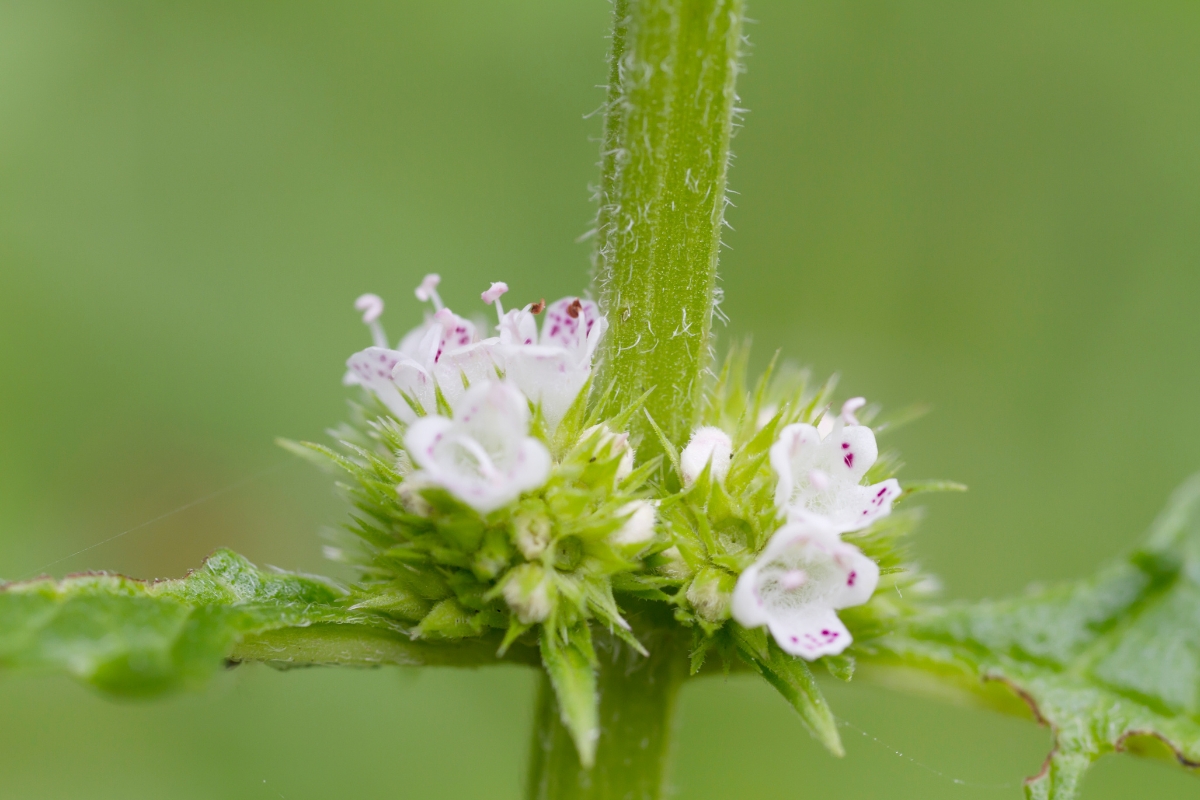
Bishop’s Weed (Aegopodium podagraria)
Also known as Goutweed, Bishop’s weed has a long history of being cultivated as a food and medicinal plant. Though not typically used today, it has been used to alleviate the symptoms of arthritis and gout—a tradition that looks like it has some merit based on one study that has been conducted.
Bishop’s weed is edible and has a tangy flavor that can be off-putting to some. Harvest the leaves before the flowers appear (around May) and use them in salads, soups, or cook them as you would another vegetable.
Beautiful variegated foliage means Bishop’s Weed has been used as groundcover in gardens. It is, however, invasive in many areas of the US and you’ll want to check your state’s planting guides before planting it. Be prepared to manage it closely—Bishop’s Weed will overtake your yard if you let it.
Key identification features
Bishop’s Weed looks very similar to Honewort (Cryptotaenia canadensis), a native plant. Look for deep cuts in the leaves and small, irregular flower clusters—these will indicate Honewort over Bishop’s Weed.
Flowers:
- 4-5 petals
- Small
- Grow in umbel clusters
- Won’t bloom much in dense shade
Leaves:
- Ovate
- Serrated
- Green with white patches
- Carrot-scented
Here’s how to identify Bishop’s Weed (Aegopodium podagraria)
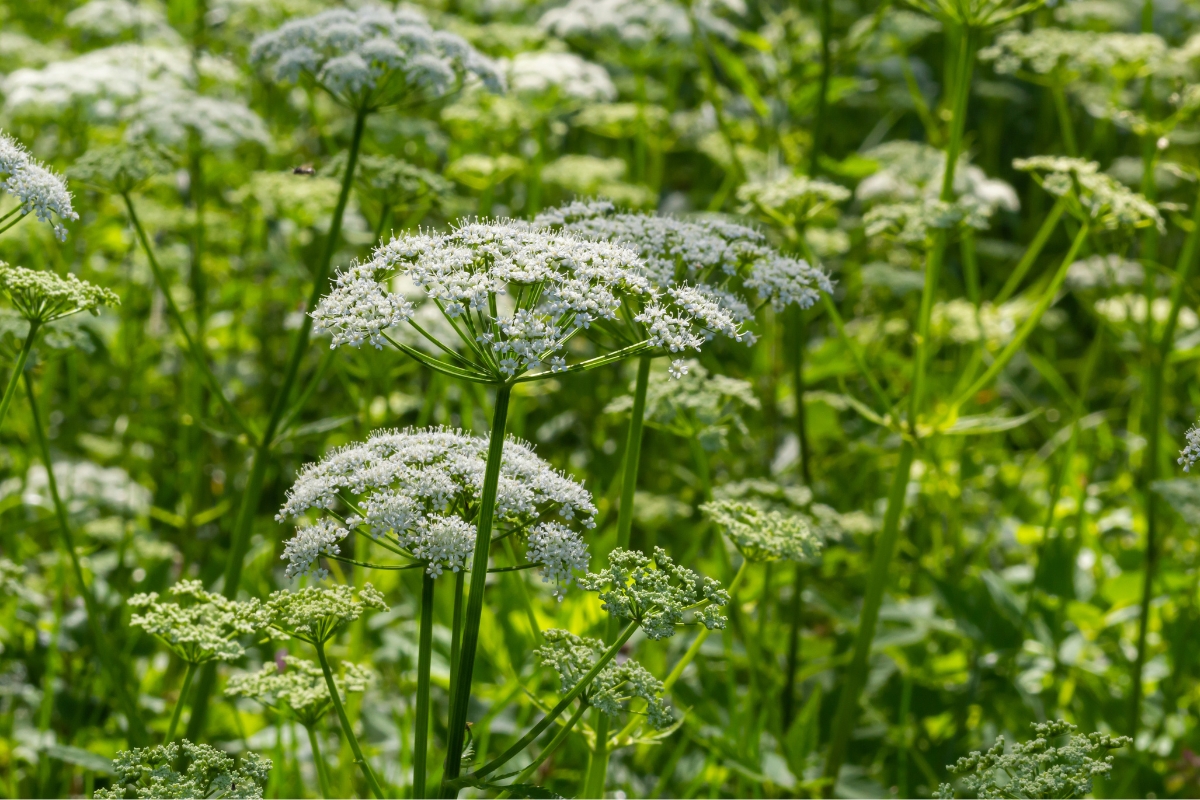
Black Nightshade (Solanum nigrum)
Taking its name from the color of its fruits, Black Nightshade may not be as poisonous as Deadly Nightshade (Solanum nigrum), but should still be avoided. The leaves and unripe fruit are the most dangerous and it’s said the fully ripe fruit is edible in limited quantities—though it’s strongly recommended you not forage for the berries and only eat from plants that are known to be an edible strain.
Similarly, Black Nightshade is used internationally as a medicinal plant (both topically and internally) but is only recommended when you know for certain the strain you’re looking at is safe to use.
Key identification features
Black Nightshade is the only one of the Nightshade wildflowers that grows white blossoms. After the blooms have turned into fruit, you can look for clusters of berries to show which is the Black Nightshade—Deadly Nightshade grows single fruits.
Flowers:
- 4-5 petals
- Star-shaped
- Yellow-green center
- Grow in umbel-shaped clusters
Seeds:
- Forms dark berry clusters
- Berries are 1/4in in diameter
- Fruit ripens from green to black to purple
Leaves:
- Ovate
- Tinged purple on the undersides
- Margins may be wavy
General:
- Red or purple tinged stems
- Stems are woody at the base
Here’s how to identify Black Nightshade (Solanum nigrum)
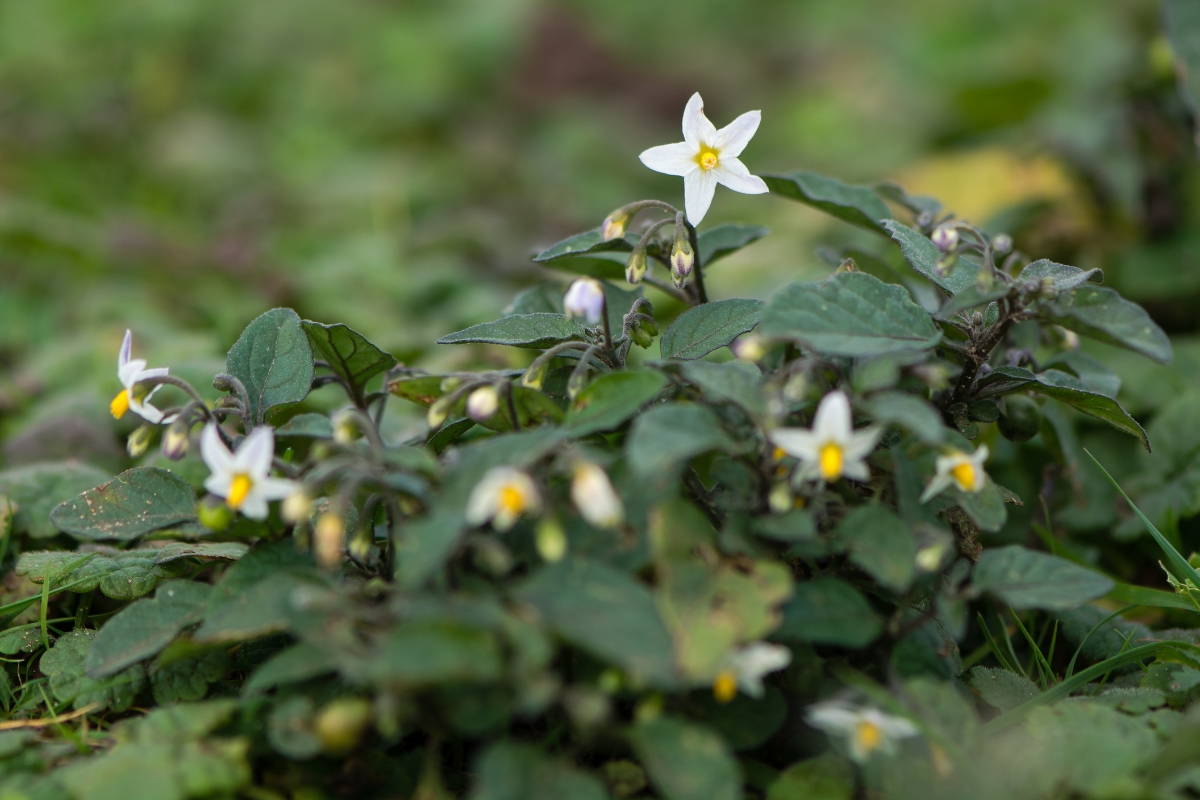
Bugle Vine (Calystegia sepium)
You’ll want to keep Bugle Vine from growing anywhere near your garden—with twining stems that it uses to grow over other plants (or tear them down), it doesn’t tolerate anything else sharing its space. Considered a non-native invasive in much of the US, Bugle Vine truly lives up to its weedy reputation.
Outside of its lovely, showy blooms, there isn’t much that’s clearly useful about Bugle Vine. While its stems, leaves, and roots are all listed as edible, they also are described as purgatives—I’d recommend avoiding eating them, or trying them only in small quantities.
Key identification features
Both part of the Morning Glory family, Bugle Vine can be confused with Field Bindweed (Convolvulus arvensis), see below.
Flowers:
- Live for 1 day
- Trumpet-shaped
Seeds:
- Forms oval seed capsules
- 2-4 seeds per capsule
Leaves:
- Arrow-shaped
- Leathery feeling
- Each leaf has 2 lobes at the base
- Can be squared
- Strongly indented
General:
- Stems grow in a zig-zag
- Stems are green to red
Here’s how to identify Bugle Vine (Calystegia sepium)
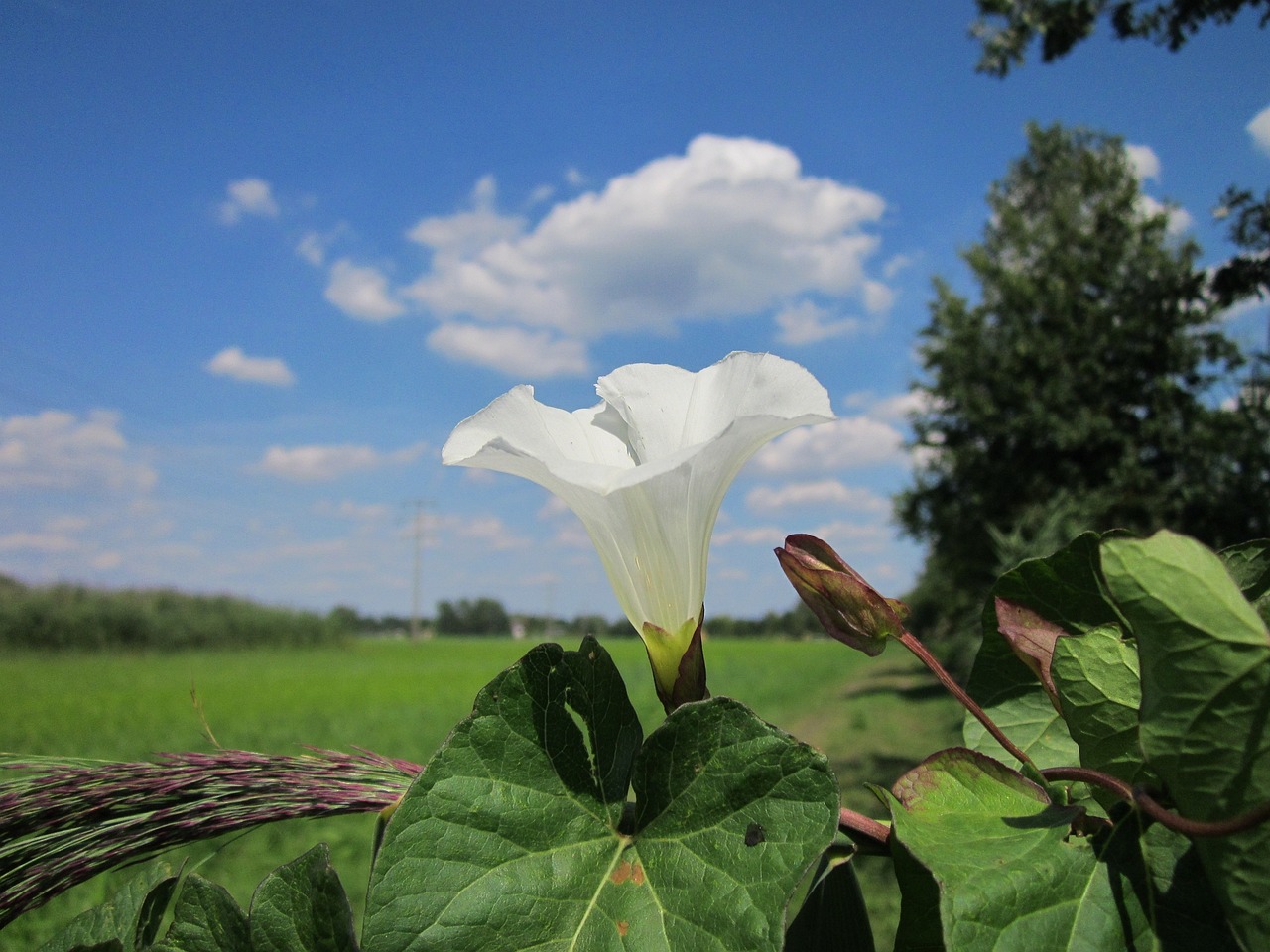
Canadian Horseweed (Conyza canadensis)
If you enjoy extracting essential oils from native plants, you’ll want to keep an eye out for Canadian Horseweed! Oil from this plant is used commercially for flavoring sweet things (think candy or sodas), and some people use it to add interesting notes to homemade perfumes. Not much oil comes from individual plants so you’ll want to have a lot of Canadian Horseweed on hand to extract a usable amount. Fortunately, it grows vigorously (if a bit invasively) and should be abundant enough to make this process feasible.
The leaves and seedlings of Canadian Horseweed are edible and are most commonly used as a condiment to flavor dishes. Several medicinal properties are associated with the leaves and roots, though few have been studied for effectiveness. Try a tea made from the roots to treat diarrhea or menstrual irregularities. Infusions of the whole plant can be used externally as an astringent or to treat bleeding.
Key identification features
Canadian Horseweed may occasionally be confused for Hairy Fleabane (Conyza bonariensis). Check for narrow leaves with a grayish-green color to identify the shorter Hairy Fleabane.
Flowers:
- Bud-like, urn-shaped
- Fringe of white petals
- Bright yellow center
Seeds:
- Dandelion-like
Leaves:
- Elliptical
- Basal rosette in fall and winter
- Occasional teeth
General:
- Unbranching except for flowers
Here’s how to identify Canadian Horseweed (Conyza canadensis)
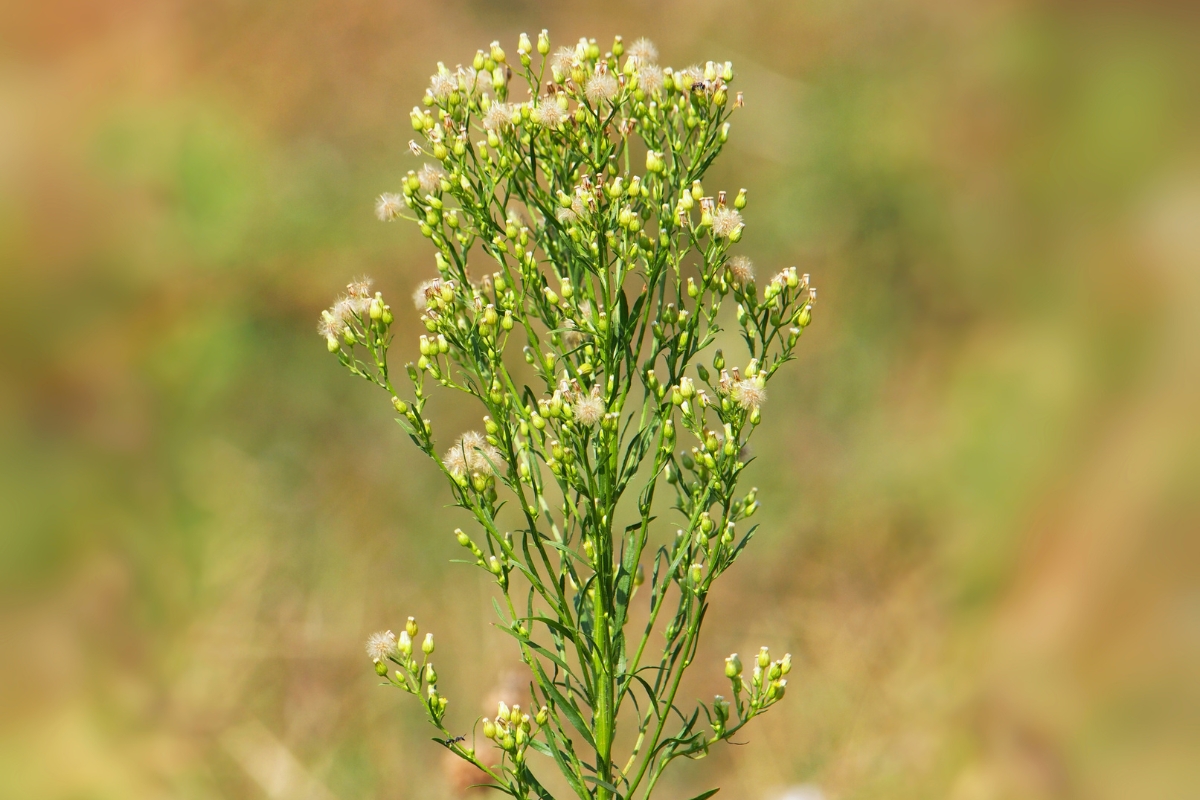
Carpetweed (Mollugo verticillate)
Originally a tropical plant, Carpetweed spread to more temperate regions of the US over 2000 years ago. It’s considered an invasive weed in almost every state, which is hardly surprising considering it grows by forming thick mats that can push out other plants.
Historically, Carpetweed may have been used as a potherb, but these days it is known to have such low palatability it isn’t considered even a famine food. Chemically, it shows antifungal and anti-inflammatory properties, though little has been done to study how best to draw out or use Carpetweed for these purposes.
Key identification features
Carpetweed can look similar to Corn Spurry (Spergula arvensis) at first glance but has fleshy leaves instead of needles. Bedstraws (Galium spp.) have also occasionally been mixed up with Carpetweed, but can be distinguished by their height—they grow erect and not flat to the ground.
Flowers:
- 4-5 white sepals
- Star-shaped
- Small, less than 1in
- Sepals may have a green line through them
Seeds:
- Forms egg-shaped capsules
- 3 valves per capsule
- 35 seeds per capsule
Leaves:
- Fleshy
- Narrow
- Elliptical, but shape varies
General:
- Grows flat to the ground
Here’s how to identify Carpetweed (Mollugo verticillate)
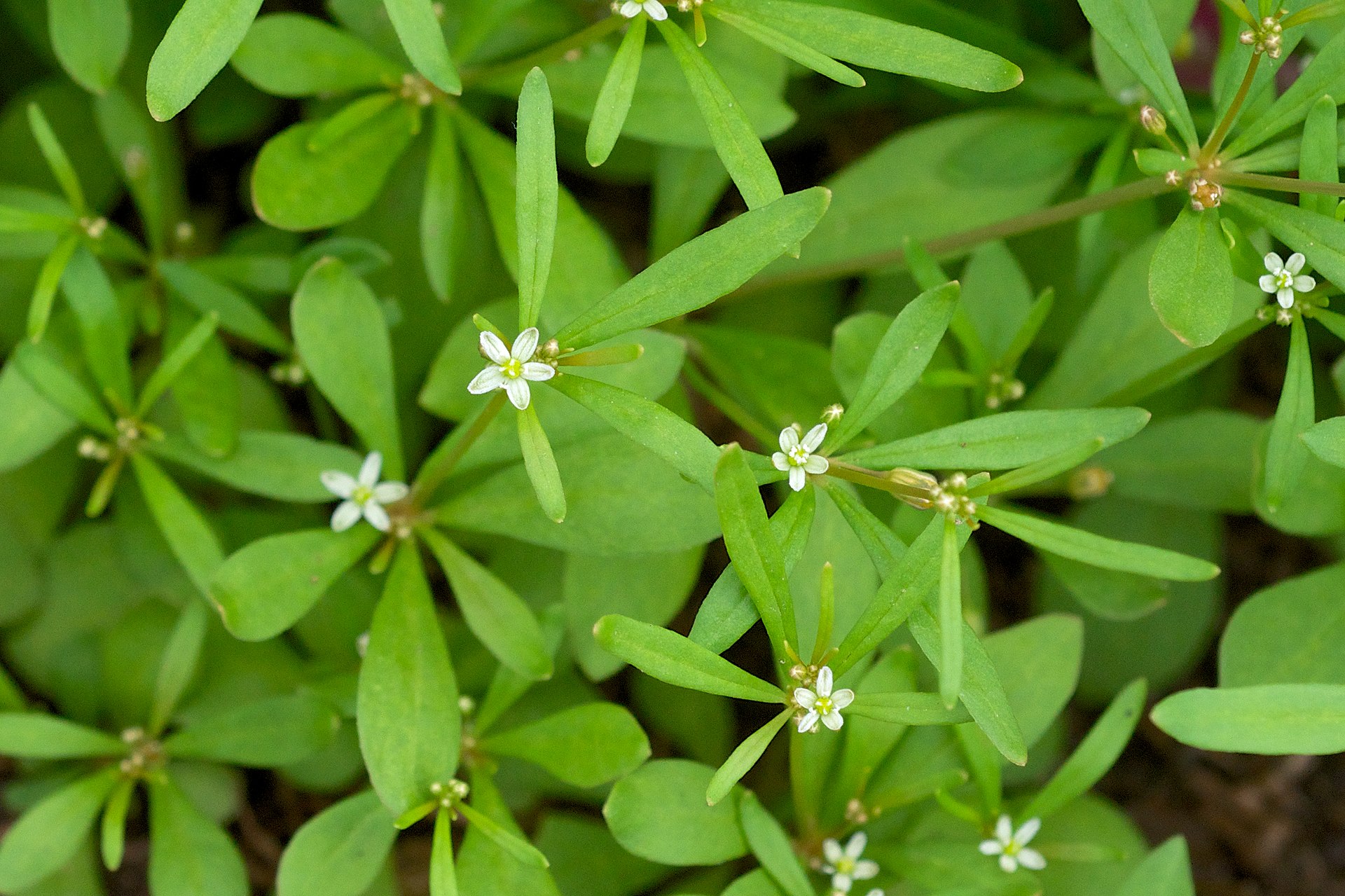
Coat Buttons (Tridax procumbens)
Despite being native to the tropical portions of the Americas, Coat Buttons as a plant isn’t well known. In some parts of the world it’s used in folk medicine to treat boils and cuts. Coat Buttons is listed as toxic and shouldn’t be eaten in any form, though it looks like little study has been done into what toxins are present in this plant that makes it dangerous.
Key identification features
Coat Buttons can be confused with non-toxic Quickweeds (Galinsoga sp.) due to how similar their flowers are. The stems for Coat Buttons will hug the ground while Quickweeds are upright. Additionally, Coat Buttons forms seed heads with bristly pappi, easily distinguished from the dry and scaly seeds of Quickweeds.
Flowers:
- Tiny
- 4-5 petals
- 1-2 notches per petal
- Erect flower stems
Leaves:
- Rough, irregular teeth
- Deep lobes in “Christmas tree” arrangement
General:
- Creeping leaf stems
- Generally hairy
- Long taproot
Here’s how to identify Coat Buttons (Tridax procumbens)
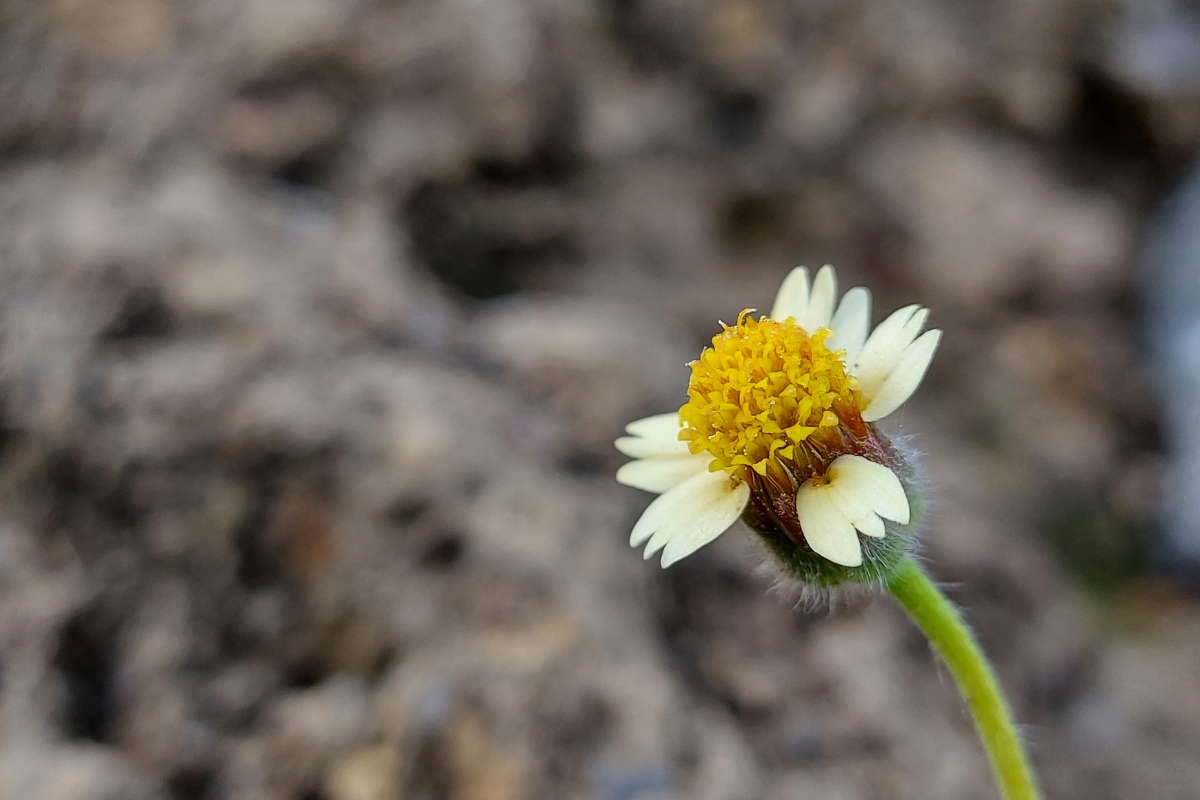
Common chickweed (Stellaria media)
A non-native plant that has escaped into the wild in North America, Common Chickweed has found ways to make itself useful in its habitat—it’s a host plant for moths and butterflies, attracts pollinators, and will even bring songbirds to the area! It does have weedy tendencies and has been listed as invasive in some areas, so it may not be best for planting in your garden.
Common Chickweed is edible from its stems to its leaves and takes its name from the delight chickens have in snacking on it. The leaves do contain saponins and it isn’t recommended that anyone eat too much of it raw (thorough cooking breaks the saponins down). It should be avoided entirely if you’re pregnant or breastfeeding.
One of the best treatments for itchy skin out there, Common Chickweed is recommended for homemade creams or ointments. With laxative and anti-inflammatory properties, it can be used to treat anything from constipation to UTIs. It’s a versatile and helpful plant to have around!
Key identification features
Common Chickweed is similar to Mouse Ear Chickweed (Cerastium) in size and appearance. Unlike Common Chickweed, Mouse Ear Chickweed grows erect and doesn’t form mats along the ground. See below for a more detailed description.
Flowers:
- 5 deeply divided petals
- Looks like 10
- Star-shaped
- 5 green sepals frame the white petals
Seeds:
- Brown cylindrical capsules
- 6 small teeth on rim of each capsule
Leaves:
- Ovate
- Small, less than 1in
- Larger leaves grow on the ends of stems
General:
- Grows in low mats
Here’s how to identify Common chickweed (Stellaria media)
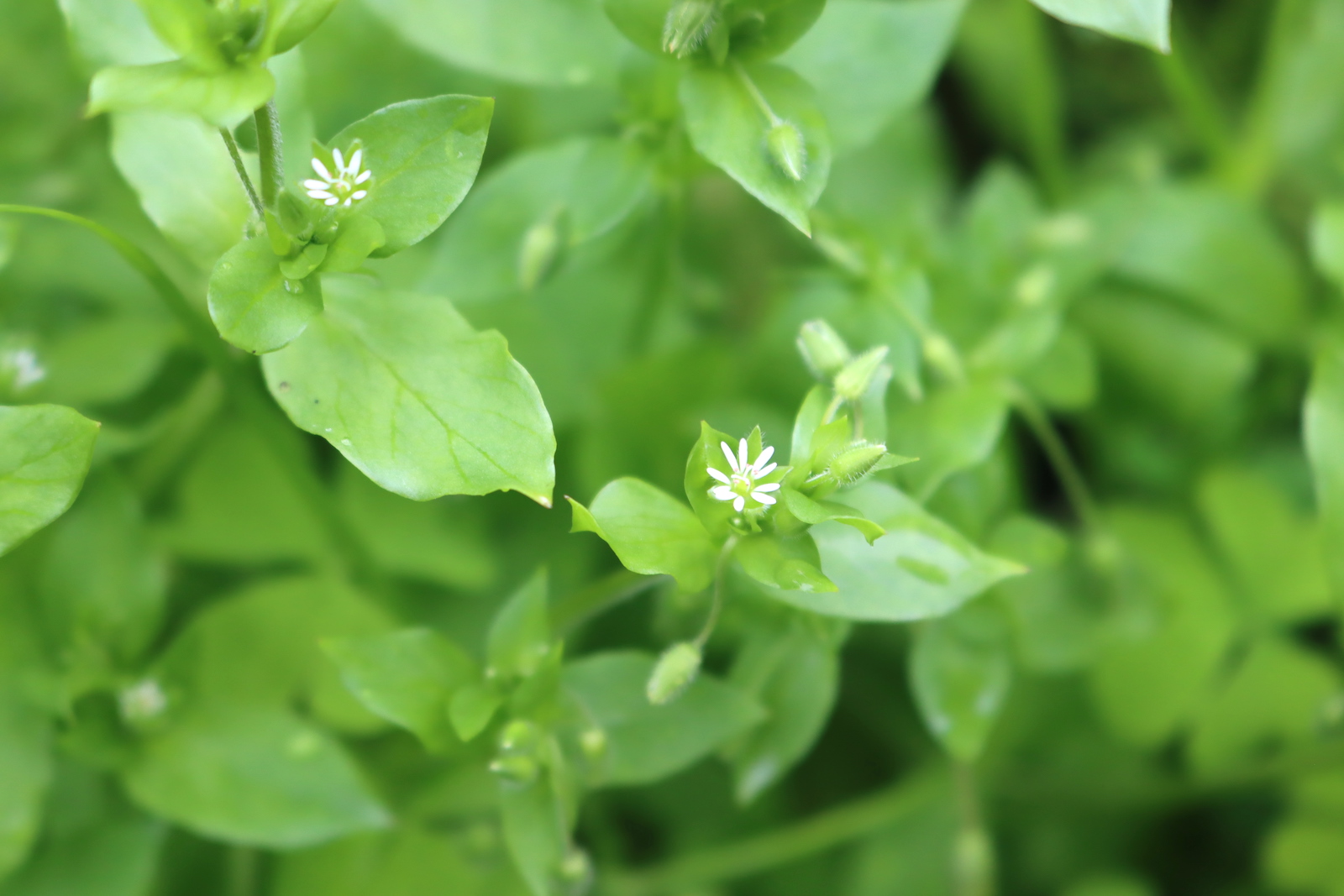
Corn Spurry (Spergula arvensis)
Most of the information you can find for Corn Spurry relates to how best to control it—considered an invasive weed and a pest in agricultural settings, Corn Spurry is an unwelcome non-native plant.
Like Common Chickweed, the leaves and seeds of Corn Spurry contain saponins and should be cooked thoroughly or eaten in moderation. Considered a famine food, Corn Spurry is edible, but not exactly desirable. Some reports indicate it has been used as a diuretic, but there is little information on how effective it is.
Key identification features
Corn Spurry can be confused at first with Pearlwort (Sagina procumbens) or Carpetweed (Mollugo verticillatus) as both of these plants also have small, white, 5-petaled flowers and narrow leaves. However, Corn Spurry truly only grows needle-like leaves. If the leaves seem fleshy at all, then it isn’t Corn Spurry.
Flowers:
- 5 petals
- 5 green offset sepals
- Star-shaped
Leaves:
- Needles
- Palmately arranged
- Hairy
General:
- Hairy stems
Here’s how to identify Corn Spurry (Spergula arvensis)

Cow Parsley (Anthriscus sylvestris)
One of many wild carrots you can find growing in the US, Cow Parsley (also called Meadow Chervil) was introduced to the US as an ornamental food plant. The root is edible when cooked and the leaves are edible both raw and as a potherb (though it tastes, “somewhat less than wonderful”). Alternatively, you can use the leaves to make a temporary green dye.
Medicinally, the root has been soaked in rice water to treat fatigue and weakness. One study indicates that Cow Parsley may be useful in treating inflammation, but few other studies have been completed.
Key identification features
Cow Parsley may be confused for any other wild carrot, including Queen Anne’s Lace (Dacus carota) and Japanese Hedge Parsley (Torilis japonica), but you should be especially careful not to confuse it with the deadly Poison Hemlock (Conium maculatum), see below.
Flowers:
- 5 petals
- Lightly notched and folded petals
- Grow in terminal clusters
- 5-8 bracts underneath the clusters
- Bracts are tear-shaped
Seeds:
- Eggplant-shaped fruits
- Green to yellowish fruits
Leaves:
- Fern-like leaflets
- Leaflets are opposite along the stem
- 1 terminal leaflet
- Longer at the base than the tip
General:
- Ribbed stems
- Hairs on the stem’s ribs
Here’s how to identify Cow Parsley (Anthriscus sylvestris)
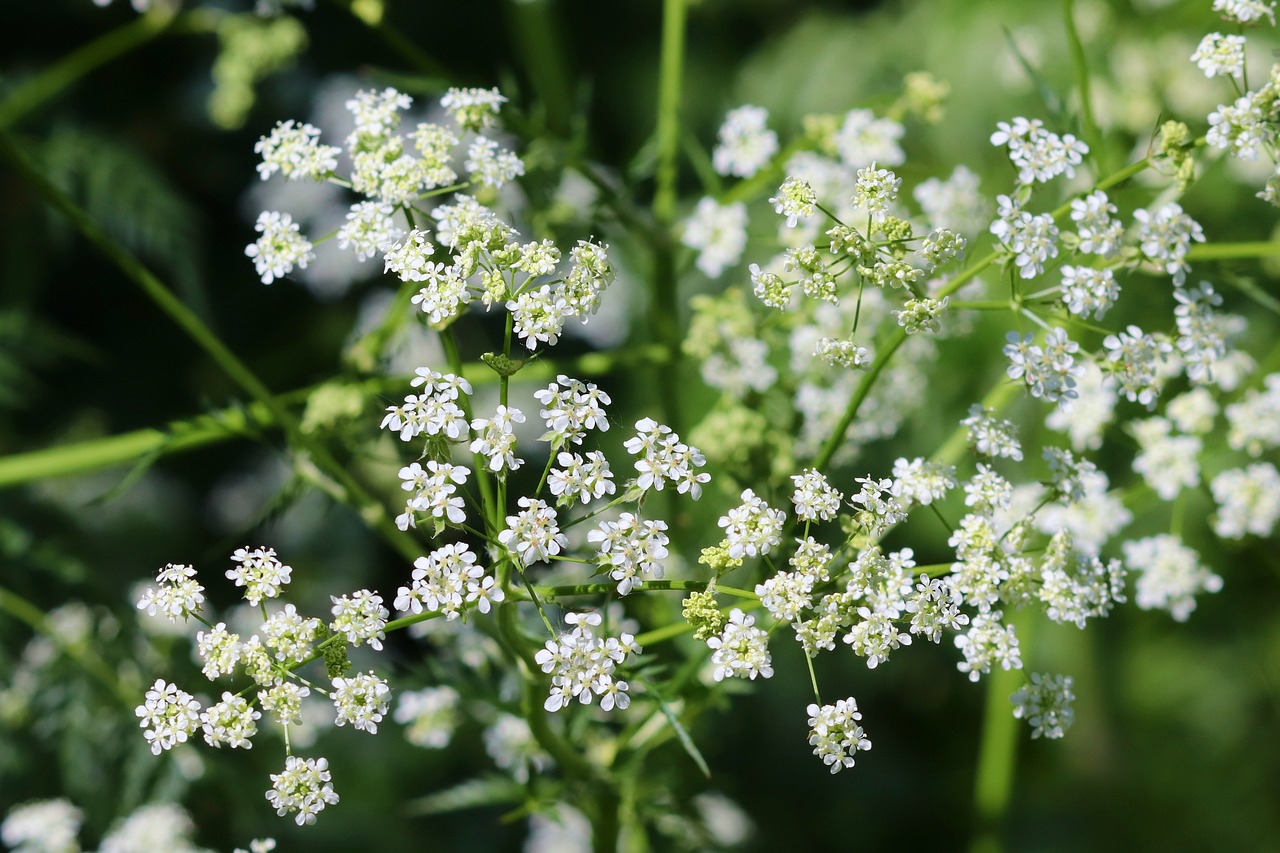
Feverfew (Tanecetum parthenium)
Perhaps one of the best-known plants for its medicinal properties, Feverfew is a non-native invasive plant in the US. It self-seeds readily and is difficult to control once it has become established in an area. If you come across it while it’s flowering, pull it up and take it home!
The flowers are used to make tea and flavor pastries. Feverfew as been known to cause mouth ulcers and contact dermatitis when fresh—it’s recommended to only use the dried leaves and flowers unless you know you don’t react to the plant’s juices.
In recent years, studies have shown Feverfew can help prevent migraines—though it won’t reduce their severity or eliminate them. Dosages vary, but most people generally chew 1-4 leaves per day for migraines. Teas made from the plant are reportedly good for fevers, colds, and inflammation. Infusions of Feverfew are excellent for soaking swollen feet and tinctures from it can be used to treat bruises.
Key identification features
Feverfew flowers look similar to those on German Chamomile (Matricaria chamomilla) and Ox-eye Daisies (Leucanthemum vulgare). Fortunately, Ox-eye Daisies have a very different leaf pattern—its leaves are coarsely toothed and form a large basal rosette with smaller leaves up above. Distinguishing German Chamomile can be a bit more difficult. Look for a rounded flower head with the petals sloping towards the ground to identify the chamomile.
Flowers:
- Daisy-like
- 10-30 petals
- 3 teeth at each petal tip
- Button-like center
Seeds:
- Flower becomes a seed head
- Ribbed seeds
Leaves:
- Fern-like
- Fragrant
- Deeply lobed
- Undersides are hairy
Here’s how to identify Feverfew (Tanecetum parthenium)
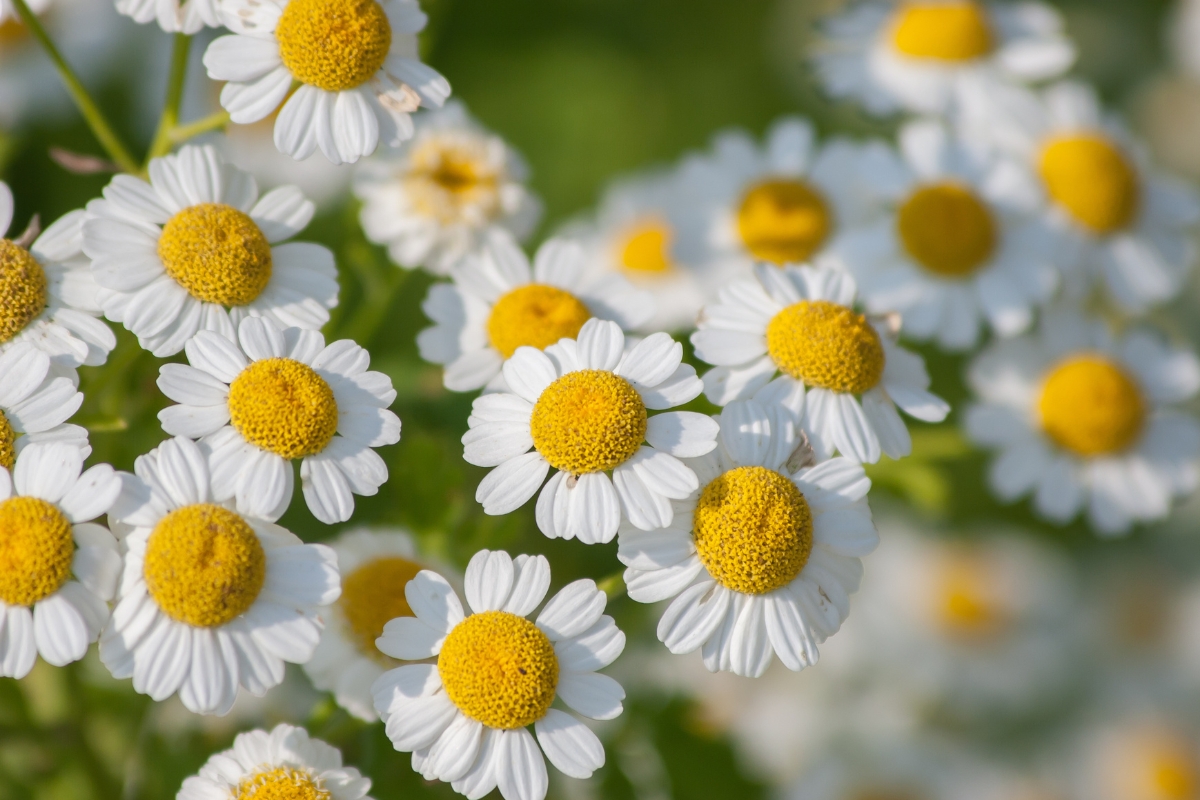
Field bindweed (Convolvulus arvensis)
Morning Glories like Field Bindweed are tricky to pin down to their individual variants. This makes it particularly difficult in identifying if they’re edible or not, and in general you should avoid them unless a local expert approves specific plants. It is safe to use externally, though, and you can brew the flowers into a wash that’s good for spider bites.
Perhaps one of the most invasive plants on this list, Field Bindweed can root itself down on (and sometimes through) pavement—rocks and pavers won’t keep it out of your garden paths. If it gets into your garden proper, you’ll have a tough time removing it; the roots of Field Bindweed can grow down to 30ft and the seeds are viable for up to 20 years! It’s not a plant you’ll want to add willingly to any plot of land.
Key identification features
Two key species Field Bindweed gets confused with are Bugle Vine (Calystegia sepium), and Bitter Buckwheat (Fagopyrum tataricum)—all three plants have similar flower shapes. Look for two, sharp, backwards pointing lobes at the base of each leaf, this will indicate the plant is Field Bindweed and nothing else.
Flowers:
- Funnel- shaped
- 2 small sepals grow separate from flower
Leaves:
- Lanceolate
- Two lobes at each base
- Pointed
- Aim back to the stem
General:
- Vining
- Extensive roots
Here’s how to identify Field Bindweed (Convolvulus arvensis)
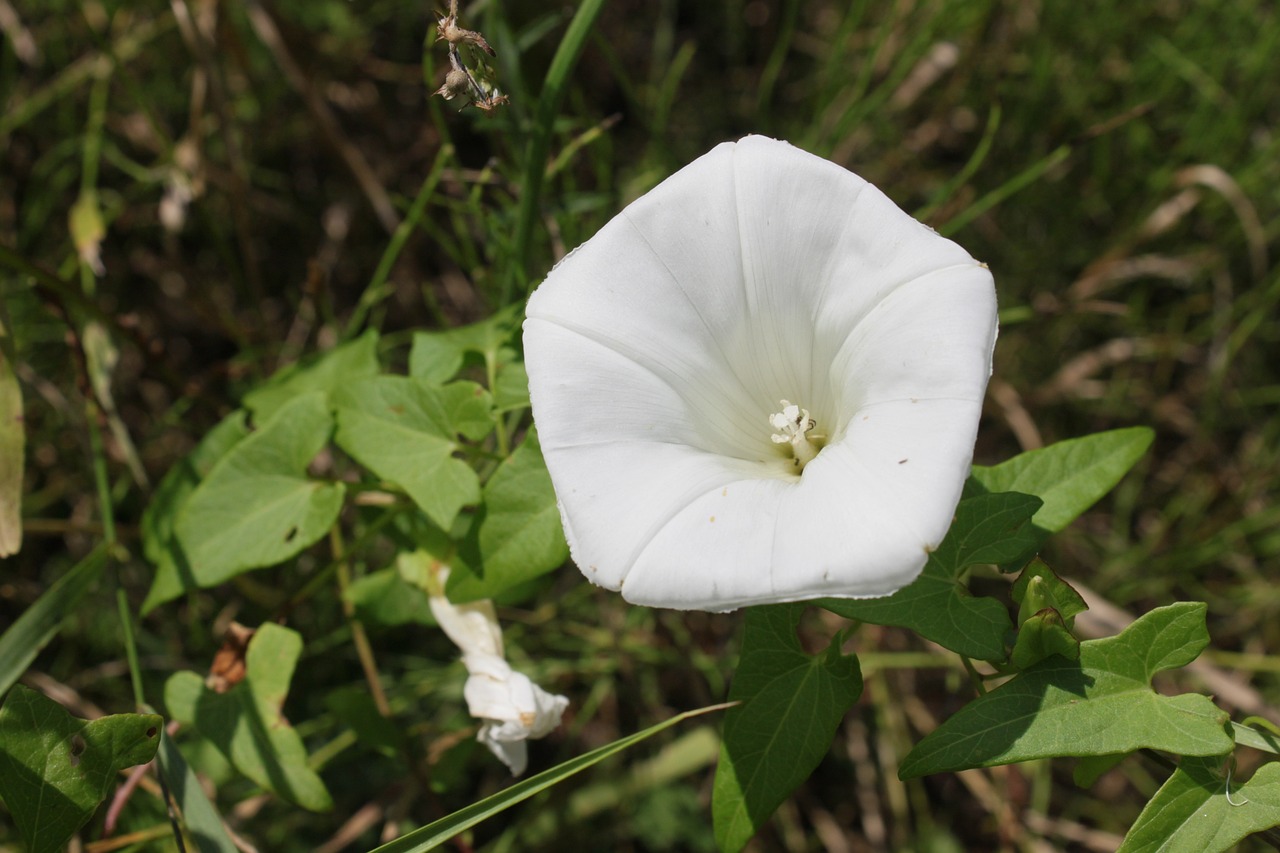
Fleabane (Erigeron sp.)
Taking its name from the belief that hanging dried clumps of it up would rid a home of fleas, Fleabane is a cheerful looking plant, if a bit of a weedy one. Some species in the genus are considered invasive in parts of the US, but it’s generally considered a weed for its habit of growing prolifically by roadsides.
No species of Fleabane is listed as edible, though a couple have traditional medicinal uses associated with them. The Philadelphia Fleabane (Erigeron philadelphicus) has been used to treat gout, chronic diarrhea, and headaches. And the Narrow Leaf Fleabane (Erigeron linearis) has been made into poultices to treat sores. Very few studies have been done into the uses for Fleabane, though hopefully that will change.
Key identification features
Flowers:
- Fragrant
- Over 20 fine petals
- Daisy-like
Leaves:
- Lanceolate
- Lower leaves are rounded
- Overlapping
General:
- Hairy stems
- Many branches
Here’s how to identify Fleabane (Erigeron sp.)
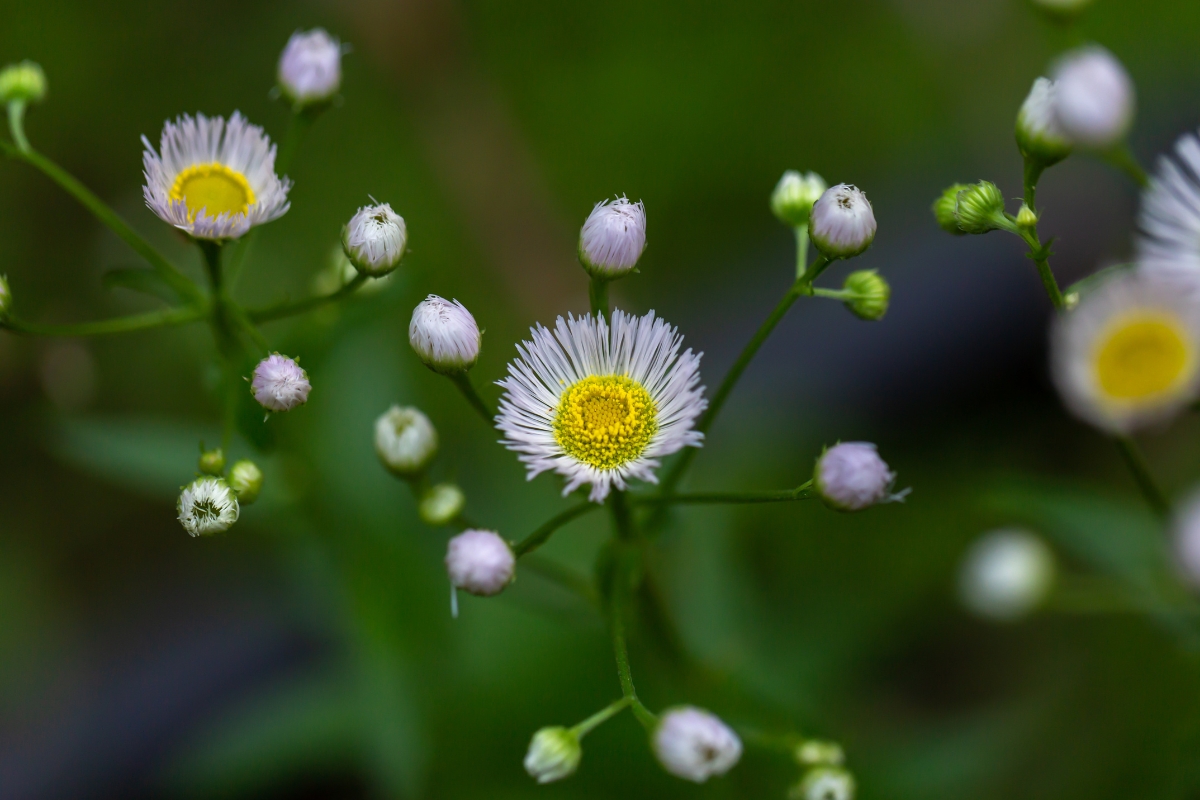
Garden valerian (Valeriana officinalis)
Garden Valerian is a highly sought after plant as a sleep and relaxation aid. Teas and tinctures made from the roots can be drunk for relaxation throughout the day (though not if it makes you sleepy!). An essential oil can be pressed from the leaves and roots and is good for flavoring sweet foods or in homemade perfumes.
Many people plant Garden Valerian in their yards to keep this useful plant on hand. Be prepared if you do: Garden Valerian will take over if you let it grow freely. It needs to be kept in careful check to avoid it escaping out into the wild.
Key identification features
Smell is the easiest way to distinguish Garden Valerian—once you know what it smells like (whether from a dry or fresh source), you can identify it anywhere! But pay careful attention to not confuse it with Poison Hemlock (Conium maculatum), see below. Otherwise, you may confuse it for Common Yarrow (Achillea millefolium) or Queen Anne’s Lace (Daucus carota), which both have fern-like leaves to distinguish them.
Flowers:
- Star-shaped
- 4-5 petals
- Grow in umbel groups
- Fragrant
Seeds:
- Dandelion-like
Leaves:
- Lanceolate
- Grow in pairs plus one terminal leaf
- Fragrant
- Narrow lobes
General:
- Long, fragrant taproots
Here’s how to identify Garden Valerian (Valeriana officinalis L.)
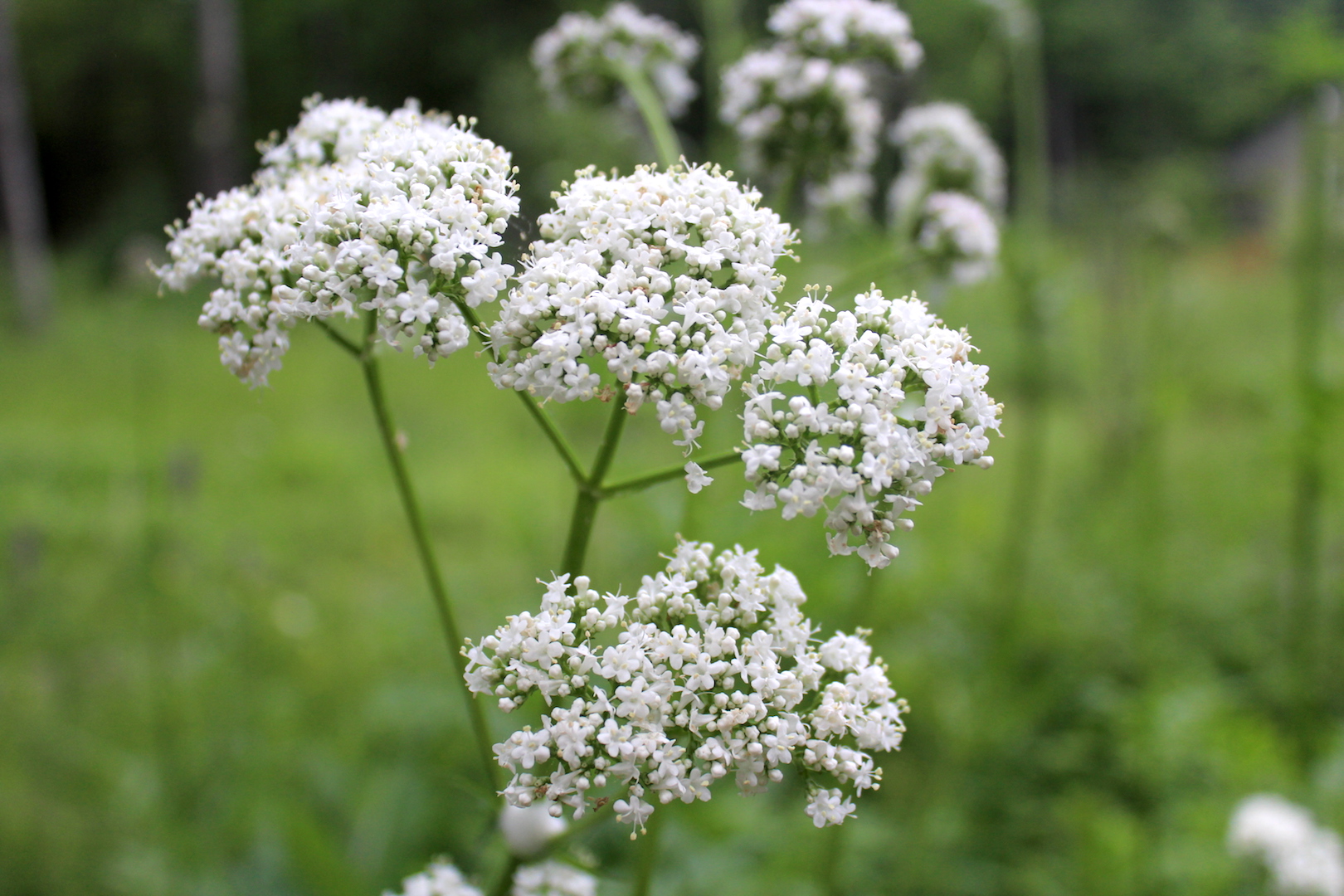
Hairy Bittercress (Cardamine hirsuta)
A non-native inhabitant of the US, Hairy Bittercress was likely introduced as a food plant before escaping into the wild and becoming invasive. The leaves and flowers are both edible and have a nice, peppery taste that’s a bit like hot cress. While you can cook it like a potherb, most people enjoy Hairy Bittercress as a garnish in salads.
Considered weedy because it’s most easily managed through prevention, Hairy Bittercress isn’t invasive in the traditional sense. It also serves a critical role in feeding two species of caterpillar: Spring Azure Caterpillars (Celatrina ladon) and Falcate Orange-tip Caterpillars (Anthocharis midea).
Key identification features
Flowers:
- 4-5 petals
- Cross-shaped
- Small, less than 1in
- Grow in clusters
Seeds:
- Purplish-green seedpods
- Elongated, narrow seedpods
- Seedpods grow up around flowers
Leaves:
- Reniform-shaped
- Similar to a rounded off diamond
- Alternate along stems, with one terminal
Here’s how to identify Hairy Bittercress (Cardamine hirsuta)
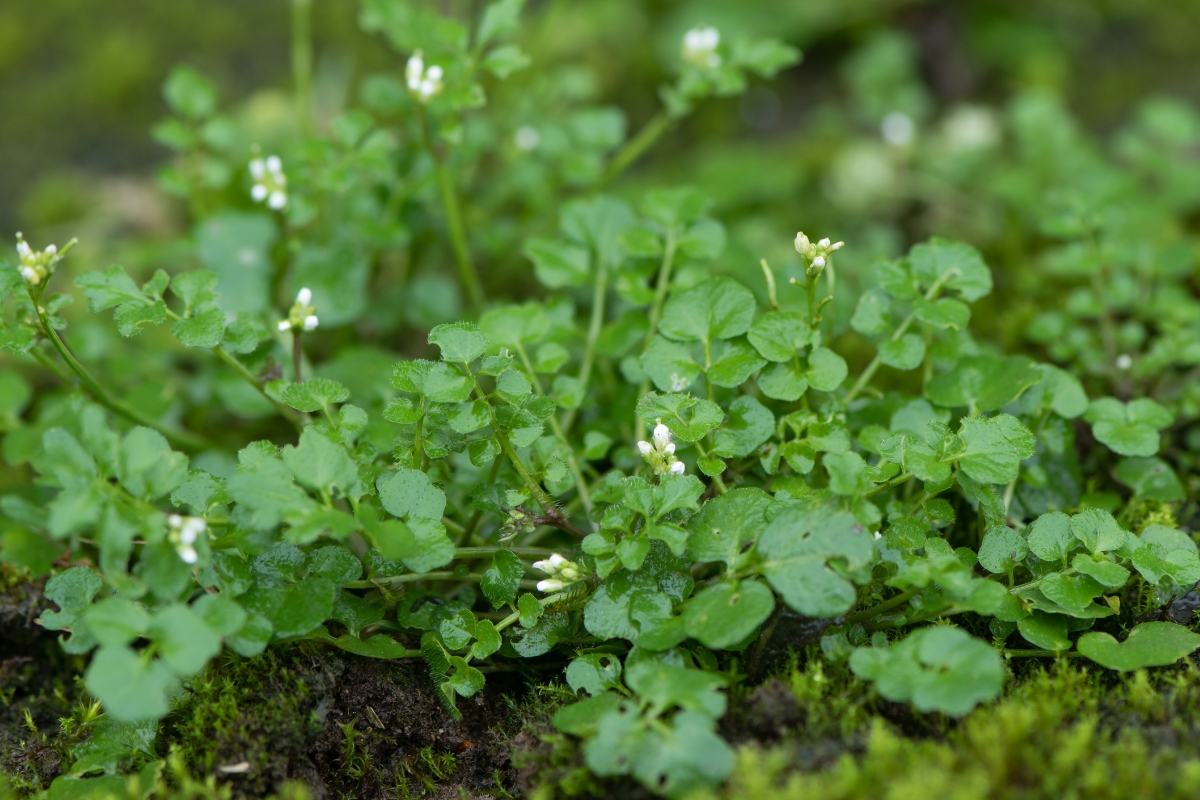
Himalayan Blackberry (Rubus armeniacus)
You might be delighted to come across a Himalayan Blackberry when it’s in season—its berries are larger and sweeter than what you’ll find on any other wild bushes—but it’s rarely a good plant to have growing wild in the US. Highly invasive, the Himalayan Blackberry forms dense thickets that push out native undergrowth and prevent the establishment of native tree saplings.
There is some indication the Himalayan Blackberry might be useful in providing shelter for ground nesting birds, but most studies show these birds prefer native shelter over these blackberry thickets.
Key identification features
Flowers:
- 5 petals
- Small
- Dozens of fine stamens
Seeds:
- Forms large blackberries
- Blackberries are sweeter than other wild varieties
Leaves:
- Rounded
- Toothed margins
- Groups of 5 per stem
General:
- Thorny stems
- Forms tall arching canes
Here’s how to identify Himalayan Blackberry (Rubus armeniacus)
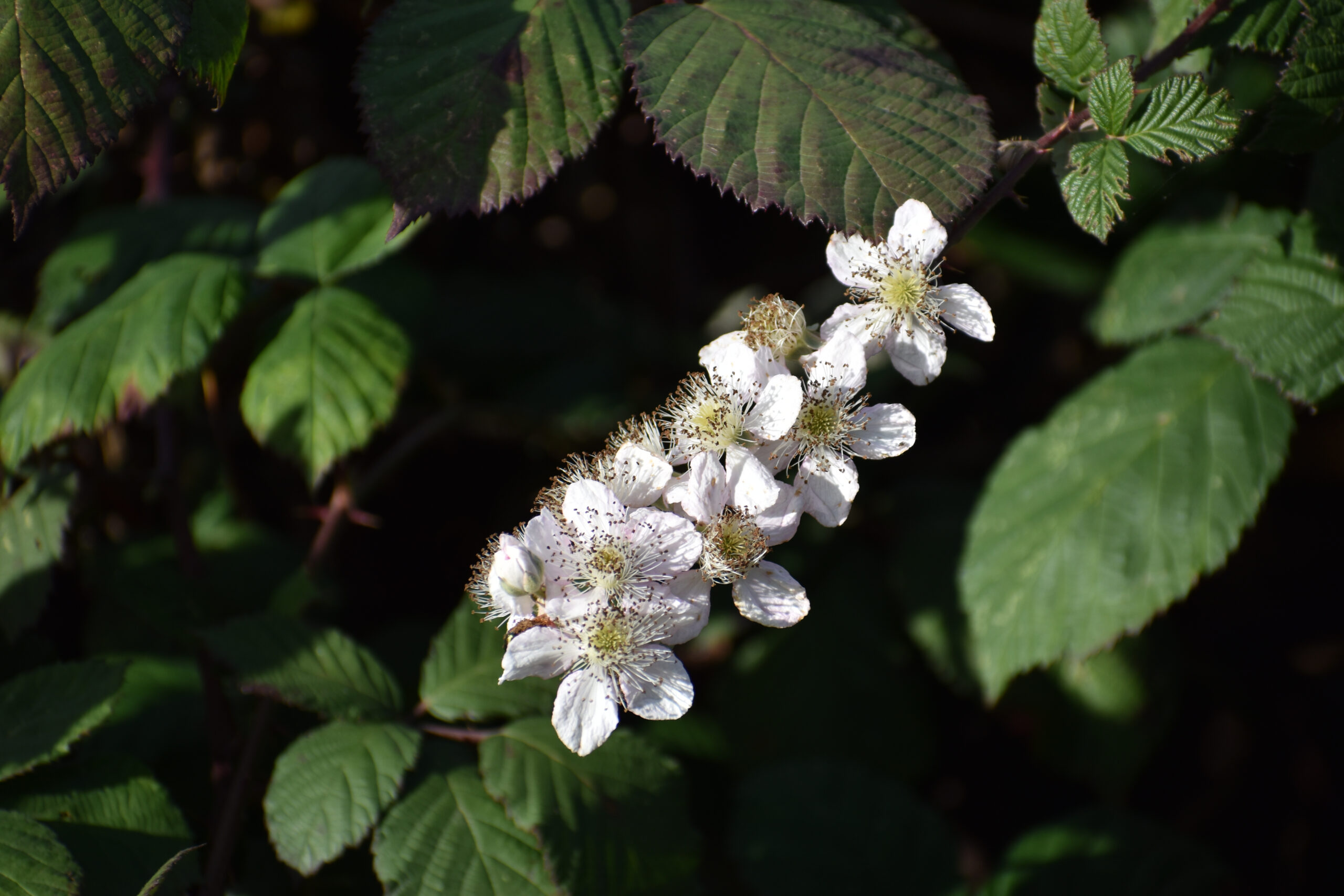
Japanese Hedge Parsley (Torilis japonica)
Named for its habit of growing in and among hedges, Japanese Hedge Parsley isn’t actually a type of parsley—it’s a wild carrot! You’ll find the root edible once it’s been peeled. Cooking the leaves also makes them edible (though the only taste listed for them is “aromatic”).
A variety of medicinal uses are listed for Japanese Hedge Parsley in Chinese and Korean folk medicine. No studies have been done on how effective it is in treating scabies, lyme disease, or any inflammatory conditions.
Key identification features
As with the other wild carrots on this list, Japanese Hedge Parsley can be easily confused for the others. Look for irregularly sized petals on the individual flowers to identify it. See Poison Hemlock (Conium maculatum) below for the deadliest look alike.
Flowers:
- 5 notched petals
- Petals’ sizes are irregular
- Grow in flat clusters
- 10-20 flowers per cluster
Leaves:
- Lower leaves are fern-like
- Upper leaves aren’t notched as deeply
- Grow opposite along stems
Here’s how to identify Japanese Hedge Parsley (Torilis japonica)

Japanese Knotweed (Polygonum cuspidatum)
Likely introduced to the US as an ornamental plant, the lack of pests and grazers for this plant means it has become widespread in the US and a bit of a nuisance. If you come across Japanese Knotweed in your area, dig it up and take it home! Just be sure to get all of the roots with the plant or it will come back.
Completely edible from its roots to its leaf-tips, Japanese Knotweed is a nutritious plant no matter which way you prepare it. Some reports indicate it may aggravate inflammation and should not be eaten in large quantities when raw. Interestingly, despite how edible it is, most of the medicinal uses for Japanese Knotweed are external: it’s good for burns, cuts, abscesses, you name it!
Key identification features
Flowers:
- Small
- Drooping
- Bell to trumpet-shaped
- Grow in plumy clusters
- Clusters are longer than the nearest leaves
Seeds:
- Black and shiny fruit
- Fruit is 3 sided
Leaves:
- Spade-shaped
- Narrow leaf tip
General:
- Hollows stems (between the nodes)
- Reddish-brown stems
Here’s how to identify Japanese knotweed (Polygonum cuspidatum)
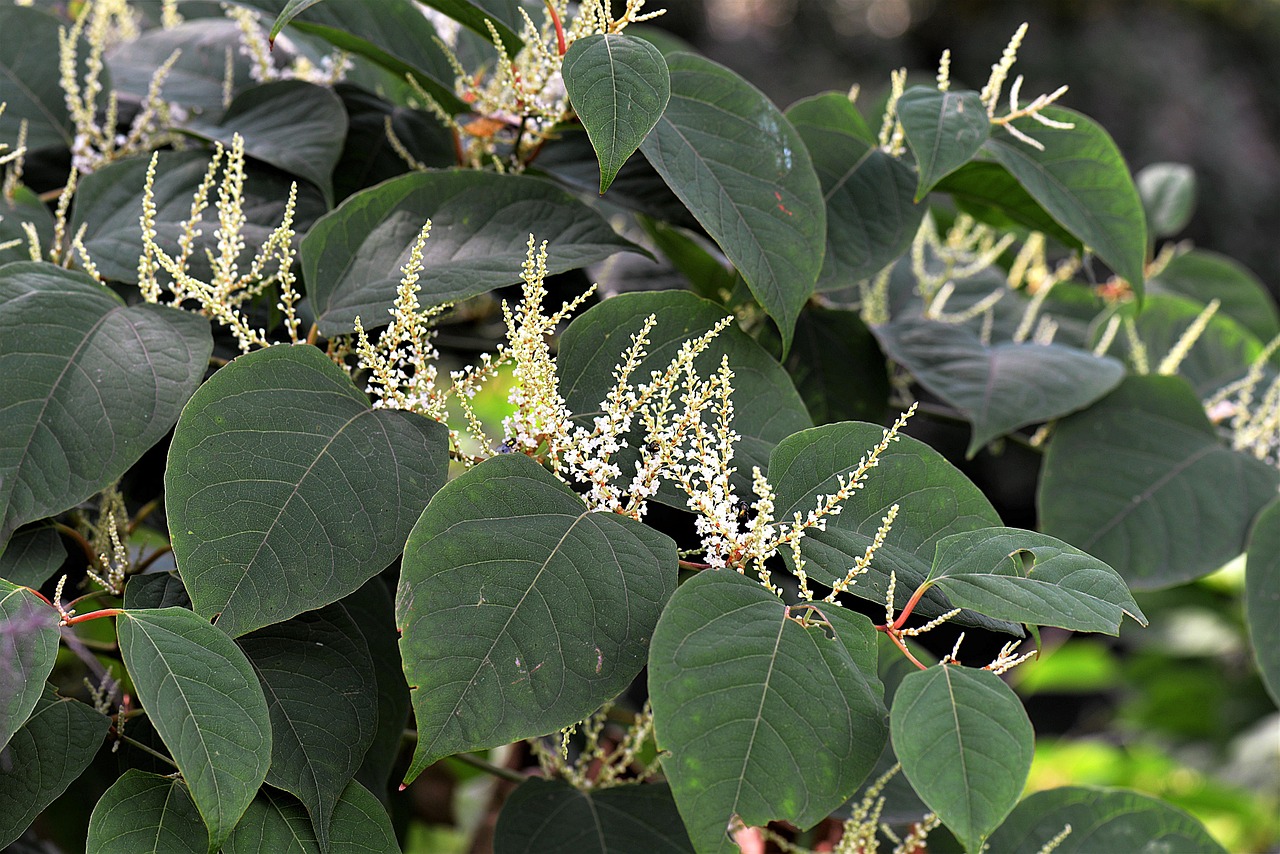
Jimsonweed (Datura stramonium)
Historically considered a medicinal and recreational plant, Jimsonweed still enjoys some cultivation in the US today. However, Jimsonweed is classified as having a low poison risk associated with consuming or smoking it and it is no longer recommended for any form of ingestion.
Some folk remedies indicate that the juice from Jimsonweed can be used to ease external inflammation. Little current research has looked into how safe or effective this treatment may be.
Key identification features
Angel’s Trumpet (Brugmansia) was once a member of the Datura genus and has only recently been moved out. It looks strikingly similar to Jimsonweed and can most easily be distinguished by its flowers: Jimsonweed’s flowers face up while Angel’s Trumpet faces down.
Flowers:
- Petals are fused together
- Trumpet-shaped
- Fragrant
- Open at night
Seeds:
- Forms egg-shaped capsules
- Green capsules may be spiny
Leaves:
- Elliptical in shape
- Margins form into points
Here’s how to identify Jimsonweed (Datura stramonium)
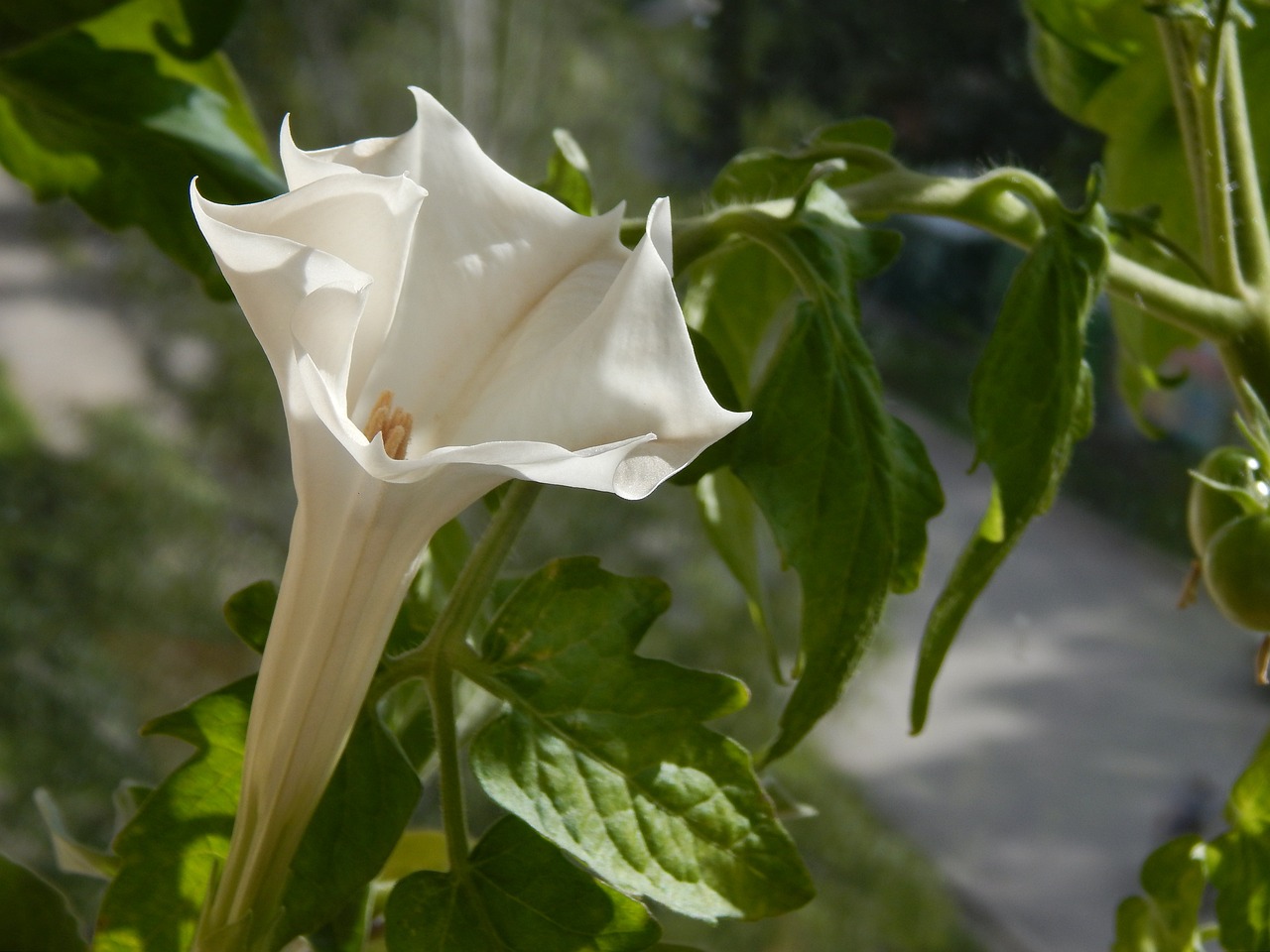
Lily of the Valley (Convallaria majalis)
Lily of the Valley is a delicate, lovely plant with precious little flowers that are prized in ornamental gardens and flower arrangements alike. It’s known to attract wildlife and has a long history of medicinal uses. While particularly known as an herbal remedy for heart complaints, Lily of the Valley is poisonous enough that using it for at-home internal treatments is no longer recommended.
Fortunately, it has a few other uses (besides looking lovely). The leaves can be used in the spring to make a green dye and a yellow dye once fall comes around. Essential oils from the flowers can be used in making perfume, giving its mixtures a fresh and sweet scent.
Key identification features
Canadian Mayflower (Maianthemum Canadense) and False Solomon’s Seal (Maianthemum racemosum) may be confused for Lily of the Valley if you’re looking at the berries alone. Once you look at the rest of the plant, you’ll be able to tell the differences.
Flowers:
- Bell-shaped
- Drooping
- Slender clusters are shorter than the leaves
Seeds:
- 1/4in round red berry
- Grow in small clusters
- Low to the ground
Leaves:
- Elliptically shaped
- Form basal pairs
- 3-5in wide
- 5-10in long
- Parallel veins
Here’s how to identify Lily of the Valley (Convallaria majalis)
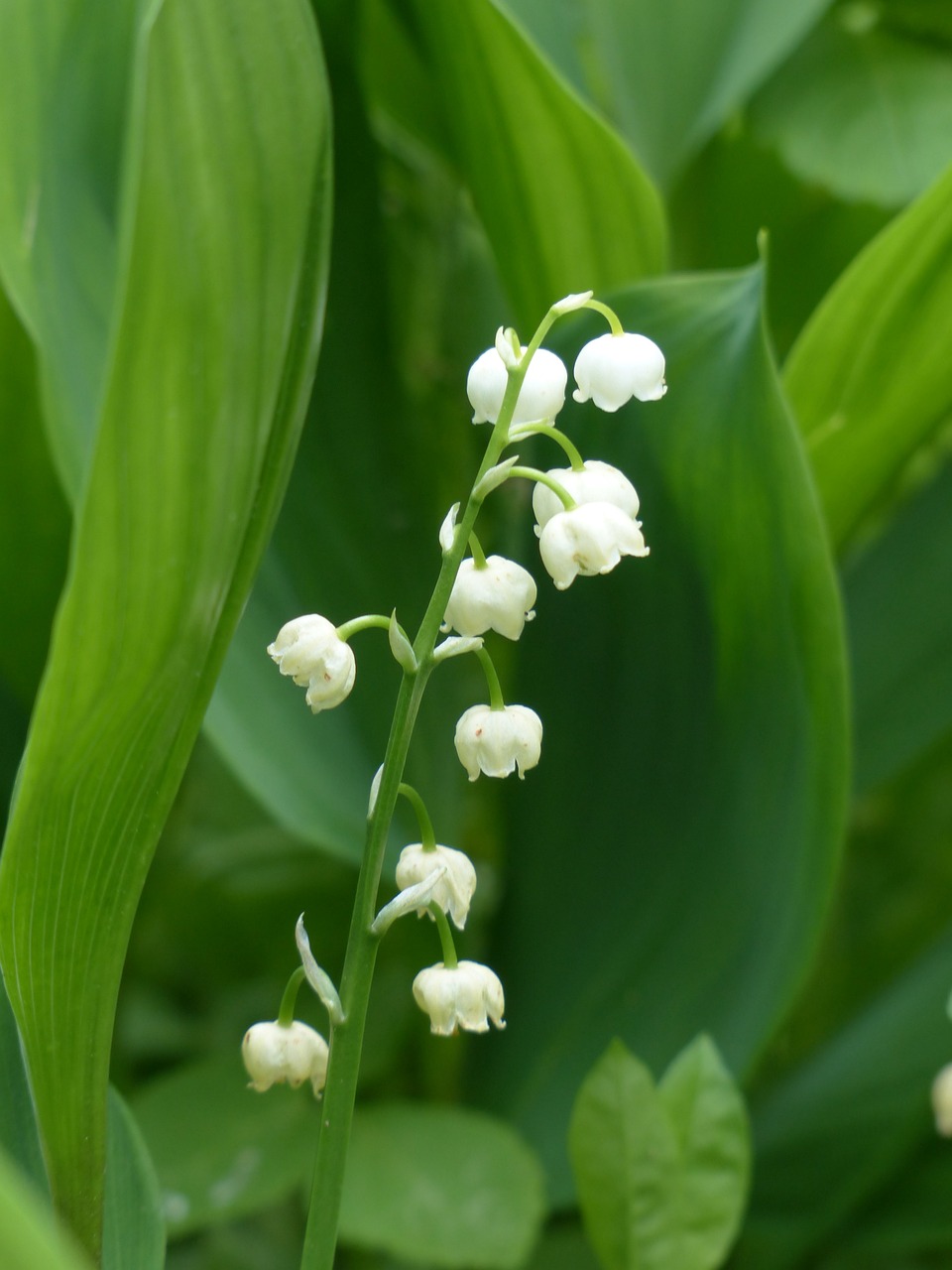
Mayweed (Anthemis cotula)
The first plant I’ve come across that’s listed as a globally invasive plant, Mayweed has many of the same properties as Chamomile, just weaker. Also known as Stinking Chamomile, the leaves and flowers are similarly edible, are similarly made into teas, but give off an unpleasant odor that puts most people off of using it, even externally.
Growing Mayweed is reported to be a home repellent for mice and fleas. Other reports indicate an insecticide can be made from the leaves. All parts of the plant can be used to make a gold dye (no reports indicate whether the smell also permanently adds to fabrics).
Key identification features
Mayweed looks a bit like Dogfennel (Eupatorium capillifolium) when in the seedling stage. Take a whiff of the leaves to look for Mayweed’s distinct unpleasant odor. The same process can be followed to distinguish it from Pineapple-weed (Matricaria matricarioides), which does have a scent, but it’s of pineapples.
Flowers:
- Solitary, at stem ends
- Daisy-like
- 3 teeth in each petal end
Leaves:
- Finely dissected
- Up to 2.5in long
- Unpleasant smell
Here’s how to identify Mayweed (Anthemis cotula)
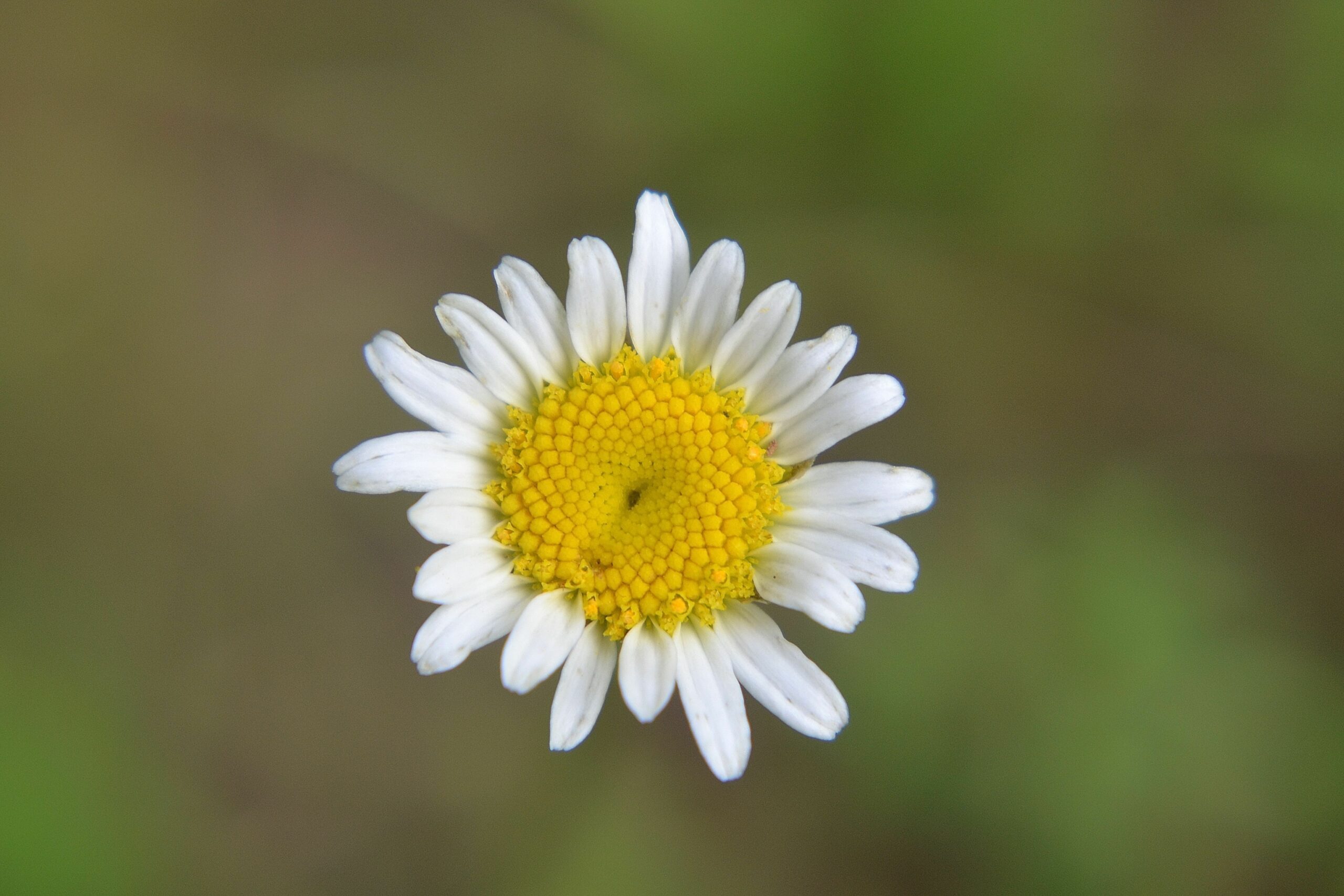
Meadow Death Camas (Zigadenus venenosus)
With a name like “Meadow Death” it should be hardly surprising we’re dealing with a poisonous plant here. Dangerous to grazing animals and people alike, the bulbs and mature leaves are the most poisonous parts, even when dried or cooked—studies have shown the toxins remain in dried Meadow Death Camas for up to 20 years after it’s pulled.
Historically, a few Native American tribes used the mashed bulbs of Meadow Death Camas as an external treatment for rheumatism, bruises, and sprains. No current research has been done into how effective or safe these treatments may be.
Key identification features
Due to names and similar bulb shapes, Meadow Death Camas can be confused for Common Camas (Camassia quamash), an edible and prized native plant. In the spring, looking for purple flowers will lead you to Common Camas and harvesting isn’t recommended outside of the flowering season.
Flowers:
- 6 petals
- Grow in terminal flower spikes
Leaves:
- Grassy
- Basally arranged
- V-shaped
- Parallel veins
- Onion smells
General:
- Onion-like bulb
Here’s how to identify Meadow Death Camas (Zygadenus venenosus)
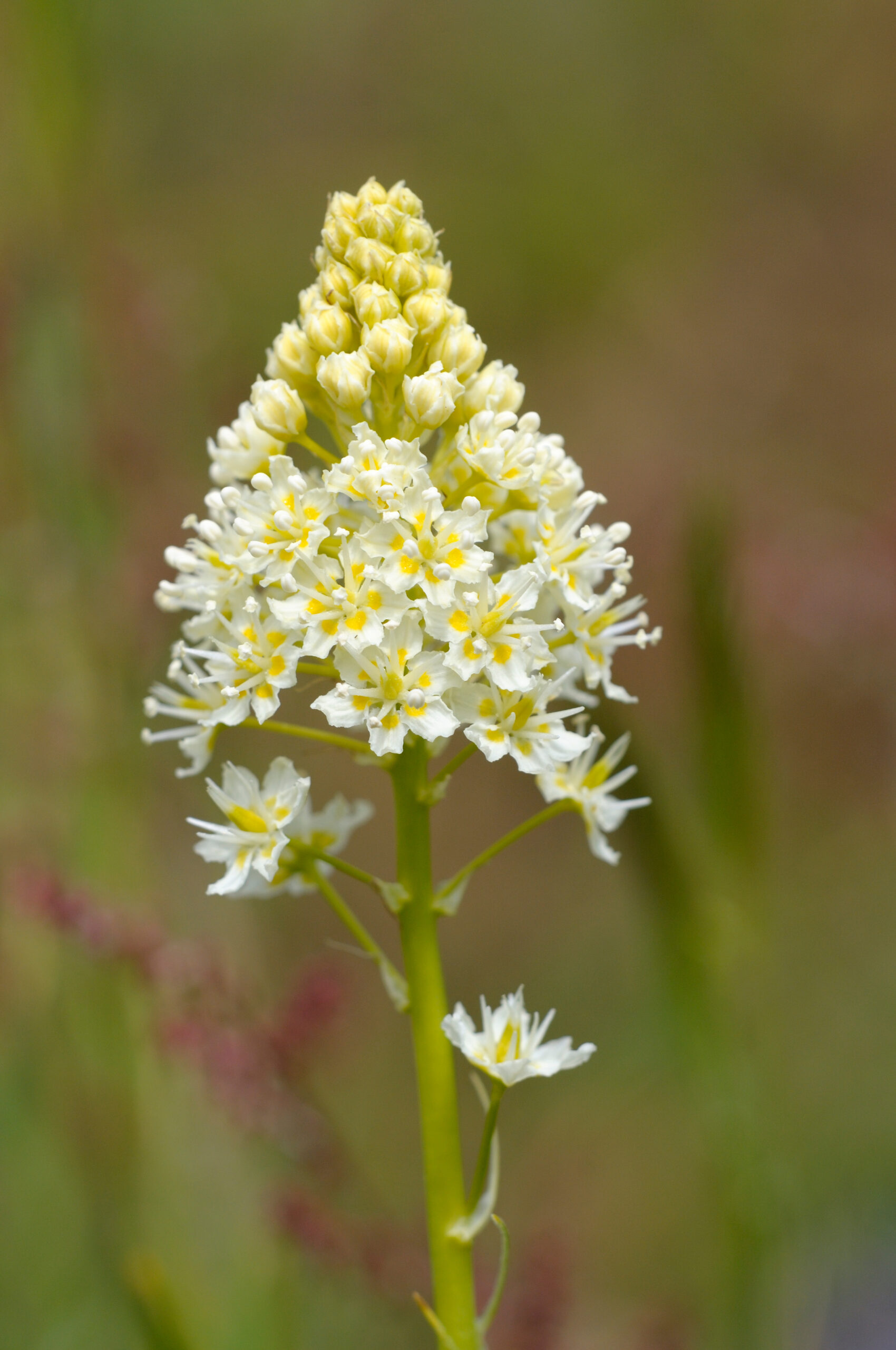
Meadow Sweet (Filipendula ulmaria)
A beautiful plant with a lovely scent, Meadow Sweet is a delight both inside and outside! Native to Europe and Western Asia, Meadow sweet makes for a lovely ornamental (in those states that allow it) while also helping out in the kitchen and medicine cabinet.
Roots, leaves, and flowers are all edible and can be used as an aromatic in cooking or in teas. Potpourri made from Meadow Sweet is said to smell better as time goes by. Commercial Aspirin is synthesized from the flowers—anyone sensitive to Aspirin should avoid consuming Meadow Sweet.
Key identification features
Flowers:
- Fragrant
- Fuzzy plumes
- Bloom in late summer
Leaves:
- Oblong
- Fragrant
- Dark green tops
- Whitish, hairy undersides
Here’s how to identify Meadow Sweet (Filipendula ulmaria)
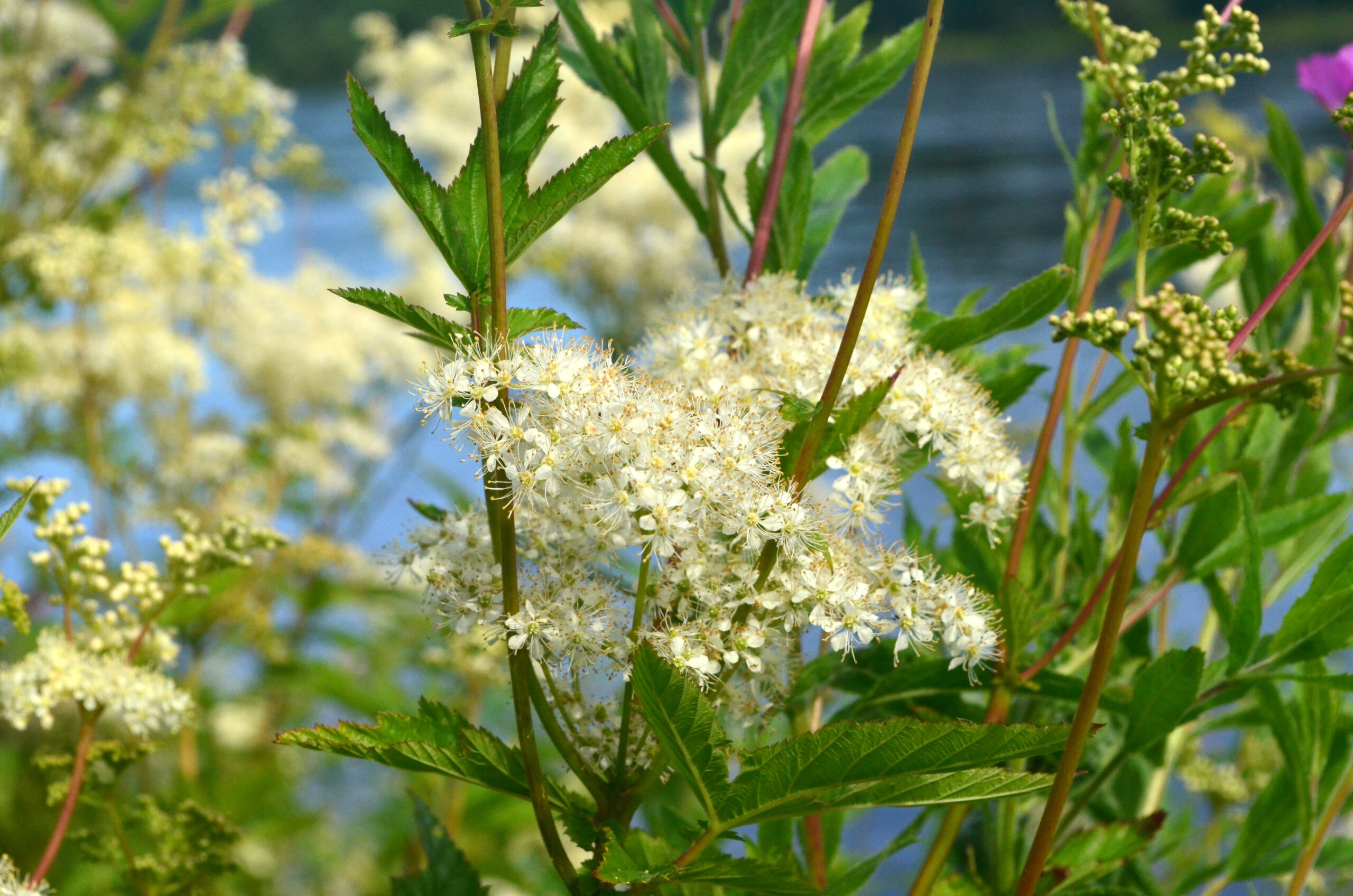
Mouse Ear Chickweed (Cerastium)
“Tiny” is perhaps the best word to describe Mouse Ear Chickweed. Its flowers and leaves are small and the stems don’t grow much more than a foot wide or tall. Despite its diminutive size, it is considered an invasive plant, subtly pushing plants native to the US out of their habitats.
Mouse Ear Chickweed isn’t listed as edible, but decoctions of it have been used to treat injuries. The whole plant is astringent, but no uses for this property are readily available.
Key identification features
Mouse Ear Chickweed is similar to Common Chickweed (Stellaria media), see above.
Flowers:
- 4-5 petals
- Star-shaped
- Petals are lobed
- 5 hairy green sepals
- Grow in clusters
Leaves:
- Oblong to ovate
- Small, less than 1in wide and long
- Sticky hairs
Here’s how to identify Mouse Ear Chickweed (Cerastium)
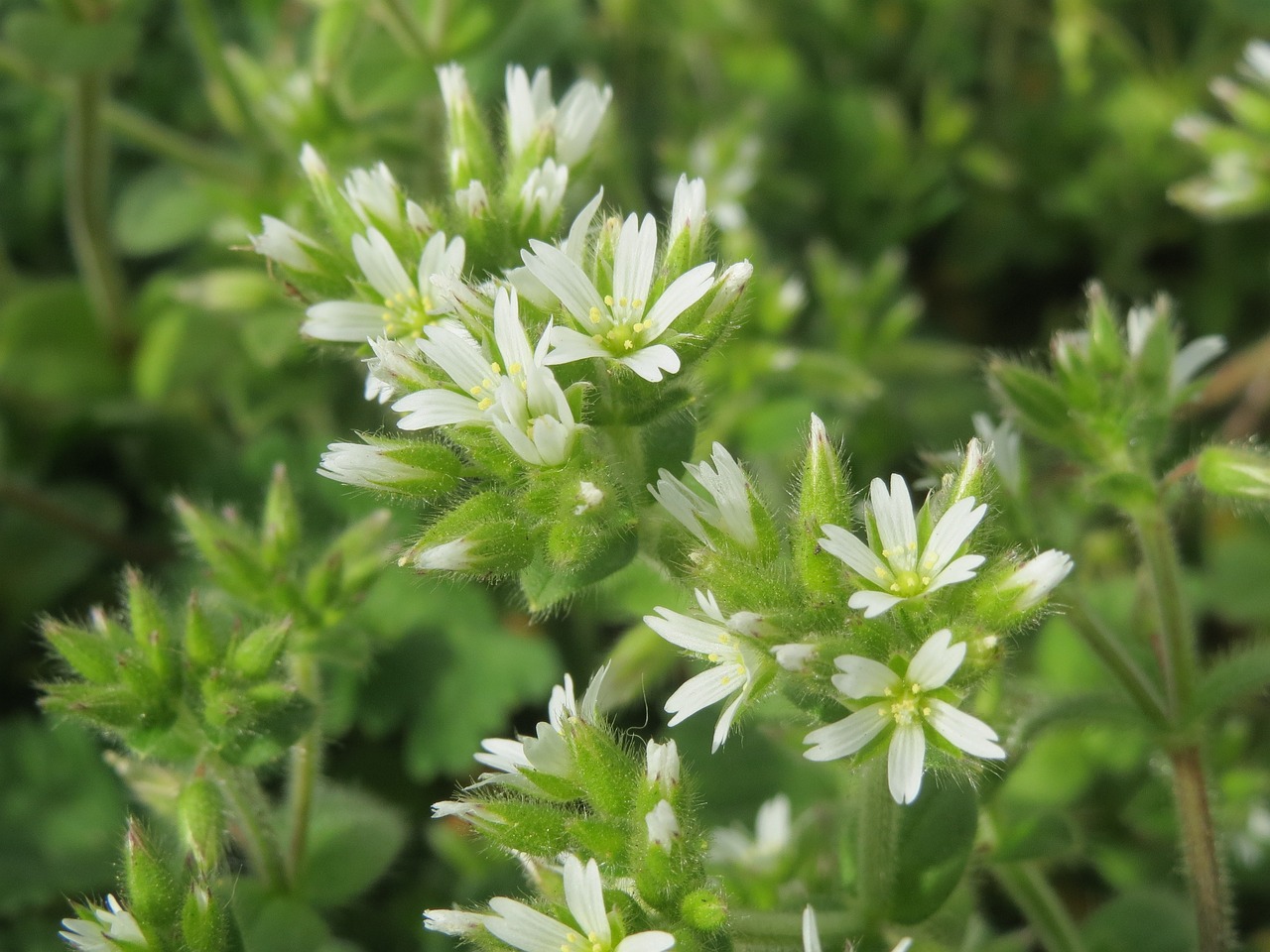
Northern Bedstraw (Galium aparine)
Also known as Stickyweed, Northern Bedstraw is a clingy plant. Weak stems mean that it can’t hold itself up to the sun, and it uses the recurved hairs on its leaves to help it climb over other plants. The fruit it produces is similarly bristly and will hitchhike on clothes and fur to new areas. Once established, it’s difficult to get rid of this invasive plant—the stems will snap before you finish pulling the roots out.
A bitter plant, Northern Bedstraw is technically edible. In the kitchen, its best use is as a coffee substitute—simply dry and lightly roast the seeds for a drink that tastes like coffee without the caffeine.
A wide array of medicinal uses are attributed to Northern Bedstraw, including use in treating UTIs and as a diuretic. Poultices made from it are used on wounds and ulcers to speed healing.
Key identification features
Flowers:
- 4-5 petals
- Star-shaped
- Small, less than 1in
- Grow in stem axils or ends
Seeds:
- Forms 2 oval fruit halves at stem ends
- Fruits are bristly
- 300-400 seeds per fruit
Leaves:
- Lanceolate
- Whorl pattern with 6-8 leaves each
- Recurved hairs
General:
- Weak stems
Here’s how to identify Goose Grass (Galium aparine)
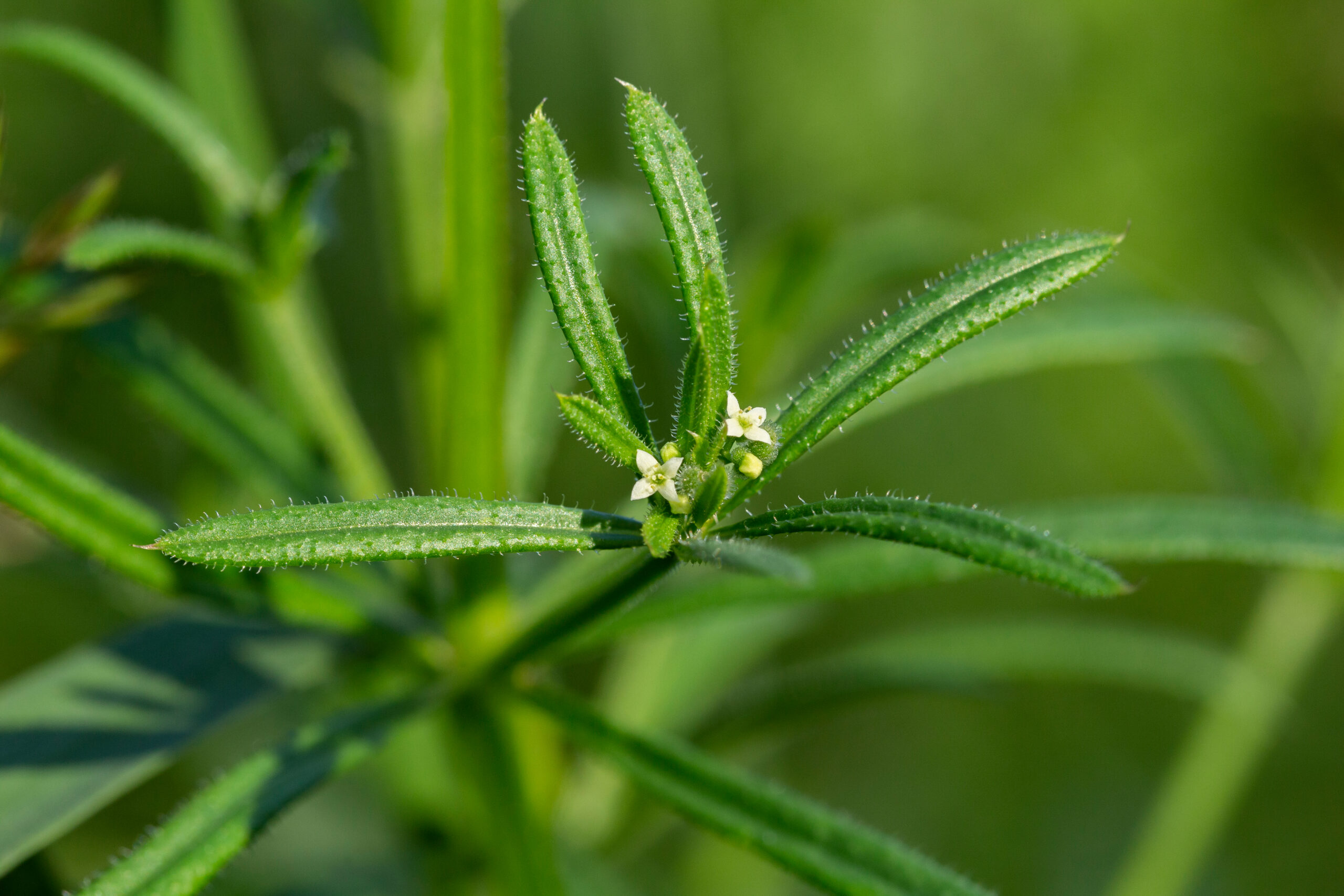
Oxeye Daisy (Leucanthemum vulgare)
Originally imported to the US as an ornamental plant, Oxeye Daisies have since escaped cultivation into the wild. You’ll find them growing in full sun to partial shade with flowers appearing from May to August.
The leaves and roots are edible but a bit pungent—use them sparingly at first until you discover what amount suits your taste. Medicinally, Oxeye Daisy can be used as a calming agent or to treat asthma and whooping cough. It can also be made into lotions for chapped hands, bruises, or wounds.
Key identification features
As the name implies, Oxeye Daisies look similar to your typical Daisy (Bellis perennis). To distinguish them, check for a rosette of dark green leaves that only grow under the typical Daisy.
Flowers:
- 7-20 petals
- Flattened yellow disc flowers
- Daisy-like
Leaves:
- Oval to spade-shaped
- Longer leaves at the base
- Lightly toothed
Here’s how to identify Oxeye Daisy (Leucanthemum vulgare)

Plantain Herb (Plantago sp.)
Introduced to North America along with European colonizers, Plantain Herb has gently become naturalized in the US and is only just beginning to be listed as a noxious weed in some states. Fortunately for anyone living in such areas, Plantain Herb is a helpful plant for the bites, scratches, and splinters that pop up during hikes.
With edible leaves and seeds, it’s even useful when found closer to home! The young leaves are less bitter and fibrous and are excellent raw or cooked. Toasted and ground seeds can be added to baked goods and porridges—though they do have a laxative effect and probably shouldn’t make up the main portion of any dish.
Key identification features
Flowers:
- Green to white
- Tall flower stems
- Grow in spiked clusters
Leaves:
- Fibrous veins
- Egg-shaped
- Grow in rosette patterns
Here’s how to identify Plantain Herb (Plantago sp.)
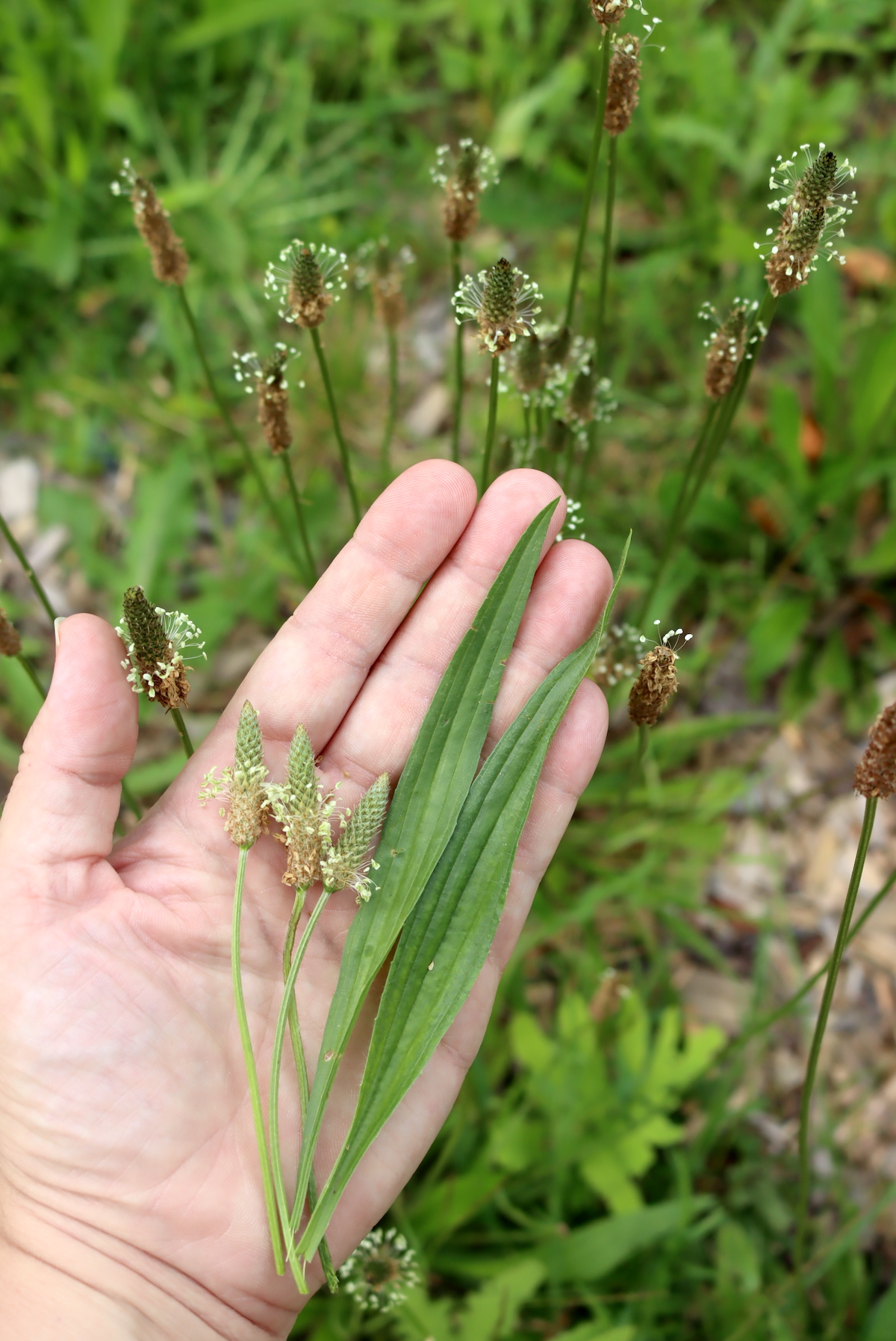
Poison Hemlock (Conium maculatum)
An intimidating name graces the Poison Hemlock, and for good reason. Every part of the plant is poisonous and no treatments are currently available to reverse the effects of ingesting it. While some reports indicate Poison Hemlock is good for treating respiratory problems, the dosage walks a fine line and should not be attempted at home.
Originally introduced to the US as an ornamental plant, Poison Hemlock is lovely to look at. If managing it in your garden, be sure to wear gloves and long sleeves as even touching the plant may cause a reaction.
Key identification features
Poison Hemlock resembles Queen Anne’s Lace (Daucus carota), Cow Parsley (Anthriscus sylvestris), and Japanese Hedge Parsley (Torilis japonica)—all wild carrots found in the US. Check for purple streaks or spots along the stem. None of the other wild carrots carry these marks.
Flowers:
- Tiny
- Umbrella clusters
- Branching flower stalks
Leaves:
- Fern-like
- Bright green
- Toothed
- Musty smell when crushed
General:
- Red to purple spots and streaks on stems
Here’s how to identify Poison hemlock (Conium maculatum)
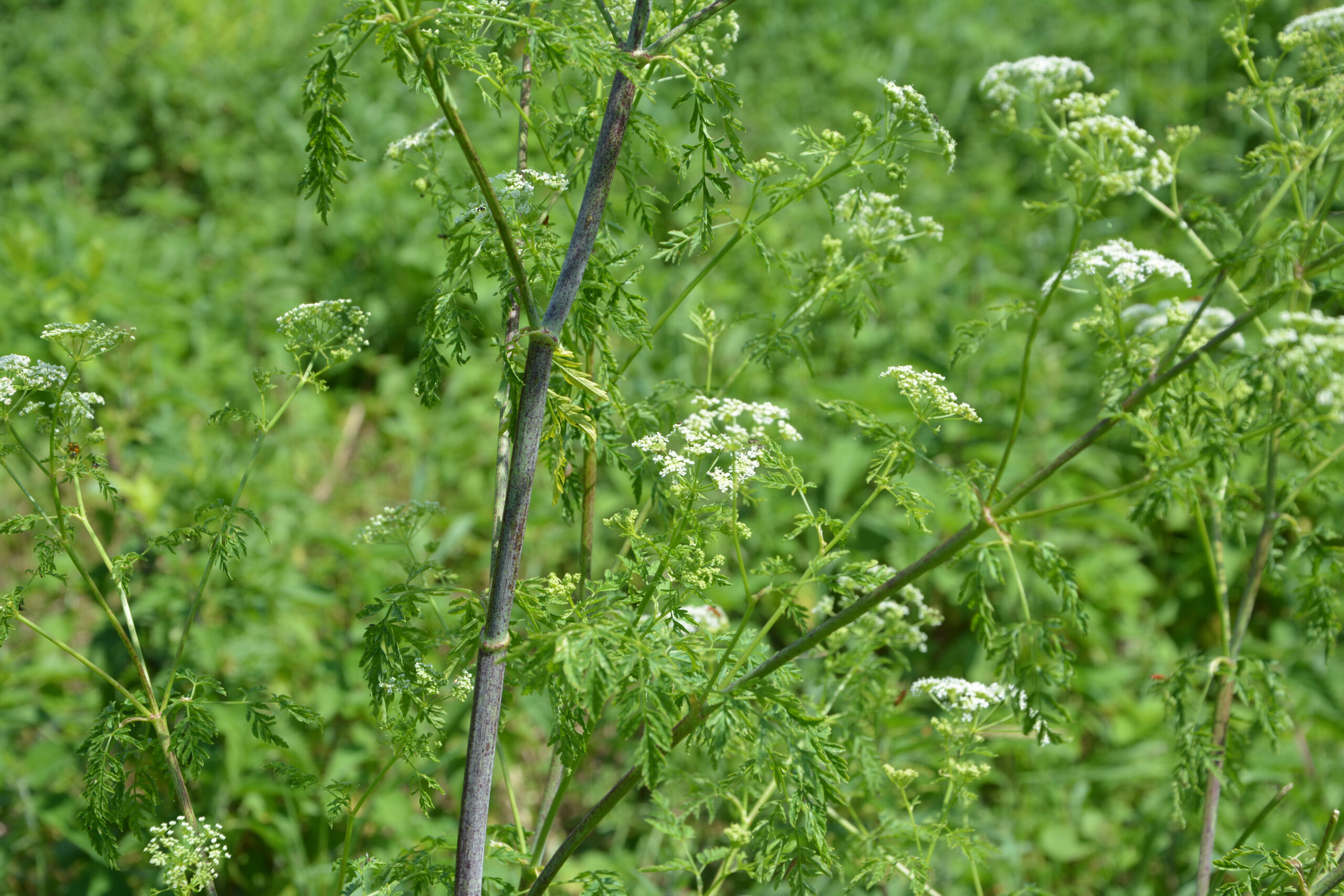
Pokeweed (Phytolacca americana)
Also known as “Inkberry,” you can use Pokeweed roots to make a red dye or its berries to make ink for fountain pens. Be careful when handling it, though—the toxins in Pokeweed can enter your bloodstream through any abrasions on your skin.
A medium-severe poisonous plant, Pokeweed has actually been historically used as a food plant: immature leaves and stems were harvested and boiled at least 3 times over to make them safe to eat. These days you might still see it served at fairs in the south, but not many other places. Be careful if foraging or eating Pokeberry stems or leaves—it doesn’t take much of the toxin to cause vomiting, diarrhea, and lower blood pressure.
Key identification features
Pokeweed’s berries look a bit like if blueberries grew in grape-clusters. Small children, then, may be prone to confuse it for something edible and you’ll want to keep them away from it.
Flowers:
- 5 white sepals
- Grow in raceme clusters
- 8in racemes
Seeds:
- Grows grape-like clusters of fruit
- Fruit starts green and turns dark purple
Leaves:
- Lanceolate
- Taper at both ends
- Turn gold in fall
- Unpleasant smell when crushed
General:
- Reddish-purple stems
Here’s how to identify Pokeweed (Phytolacca americana)
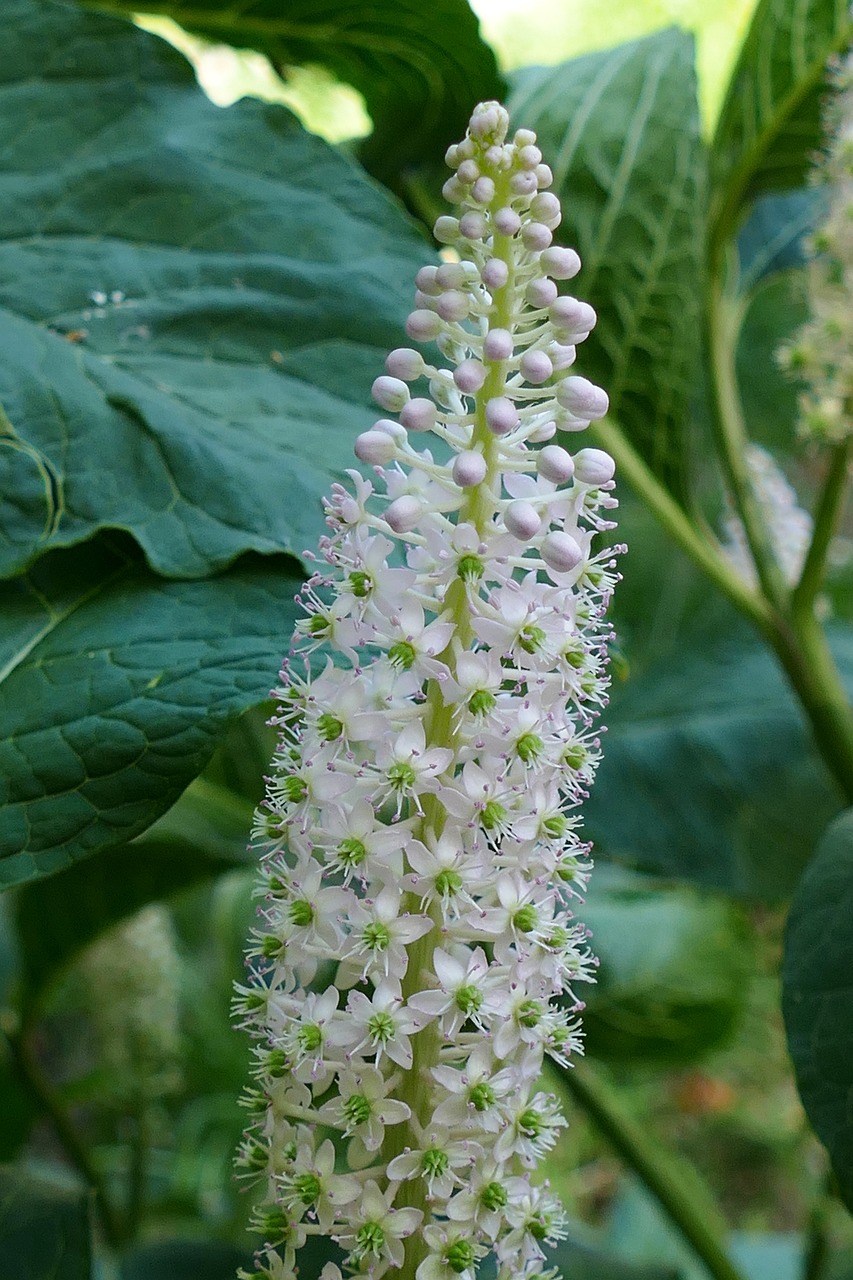
Queen Anne’s Lace (Daucus carota)
As lovely as its name, Queen Anne’s Lace is an excellent addition to any ornamental or food garden. While a bit weedy, Queen Anne’s Lace is easily managed if pulled before it puts out seeds.
Carrot-like tubers grow under this plant that are conveniently at their best just before the plant flowers. After flowering, feel free to cook up the blooms as you would a squash blossom, or the leaves in a soup—really, the whole plant is edible to some degree.
Medicinal teas, washes, decoctions and infusions can all be made from Queen Anne’s Lace. Just be sure to heat whatever mixture you’re making to draw out the medicinal elements. Be aware, though, that dyes can be made from this plant and your medicinal blends might stain your fabrics yellow from contact.
Key identification features
Flowering Queen Anne’s Lace resembles the other wild carrots on this list: Cow Parsley (Anthriscus sylvestris), Japanese Hedge Parsley (Torilis japonica), and Poison Hemlock (Conium maculatum). See the Poison Hemlock entry for how to distinguish it from the others.
Flowers:
- Tiny
- “Lacy” Umbel clusters
- Purple or red flower in cluster center
- Umbel cups in on itself as flowers die off
Leaves:
- Fern-like
- Grow opposite along the stem
- One terminal leaf per stem
- Hairy undersides
- Carrot smell
General:
- Hollow, hairy stems
- 3 forked bracts below each umbel
- Pale yellow spindly taproot
Here’s how to identify Queen Anne’s lace (Daucus carota)
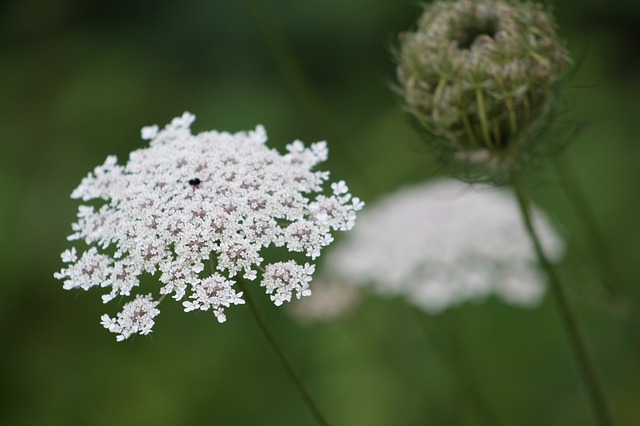
Quickweeds (Galinsoga sp.)
Two different weedy species of Galinsogas can be found in the US including Quickweed (Galinsoga parviflora) and Shaggy Soldier (Galinsoga quadriradiata). Both are edible raw or cooked, though Quickweed is often preferred for salads due to it being less hairy than the other species.
Poultices made from the leaves of Quickweed are good for cuts or skin irritations, while Shaggy Soldier is said to have anti-inflammatory properties. Teas made from the leaves of both contain vitamins you may find helpful when you get sick (like magnesium, calcium, zinc, and vitamin A, among others)
Key identification features
Both species of Quickweeds can be confused for Coat Buttons (Tridax procumbens)—all three have identical flowers to one another. See above for a description of Coat Buttons.
Flowers:
- Tiny, up to 1/4in
- Petals are notched
- Large inner yellow center
Leaves:
- Egg-shaped or triangular
- Coarsely toothed
General:
- Branching, often hairy stems
Here’s how to identify Quickweeds (Galinsoga sp.)
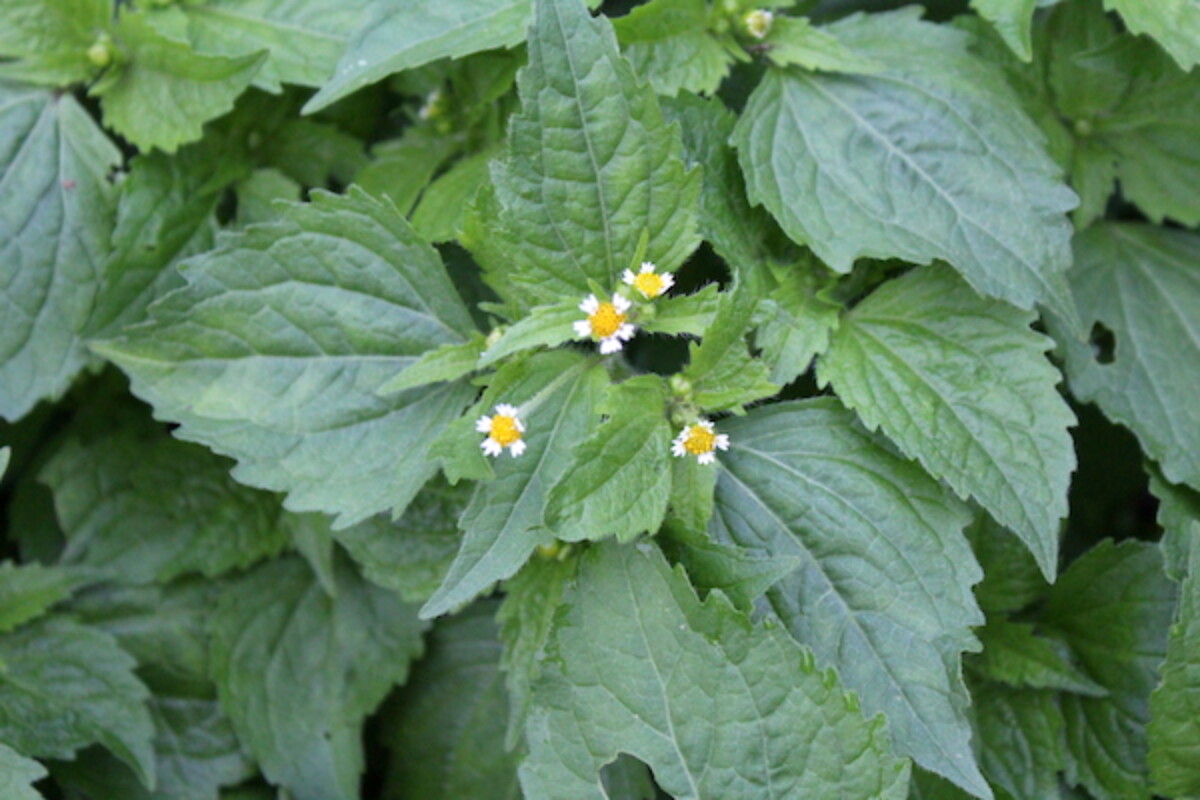
Shepherd’s Purse (Capsella bursa-pastoris)
While edible, Shepherd’s Purse is perhaps more useful outside your home. Planting it in salty areas will help “sweeten” the soil by extracting the salt out. Additionally, the seeds can help control mosquito populations by trapping adults and killing larvae.
Adding the young leaves of Shepherd’s Purse to salads gives them a nice peppery taste. Rich in vitamin K, the leaves are also good at treating nosebleeds. However, there is growing concern about Shepherd’s Purse being lightly toxic—be wary of it if you have high blood pressure or are pregnant, among other conditions.
Key identification features
Flowers:
- 4 petals
- 4 green sepals
- Star shaped
- Grow in raceme clusters
Seeds:
- Forms heart-shaped seedpods
Leaves:
- Glossy
- Smooth edges when young
- Lobed edges when mature
General:
- Stems are often reddish/purple
- Stems are hairy on the undersides
Here’s how to identify Shepherd’s Purse (Capsella bursa-pastoris)

Silverrod (Solidago bicolor)
If you’re looking for a plant to attract songbirds to your area, Silverrod may be the answer—many species of songbirds in North America rely on its seeds for food. It does self-seed readily, so keep an eye on it to prevent it from taking over your garden.
In the past, Native Americans used the flowers to treat sore throats and fevers, and the berries to soothe burns. Be aware that the leaves and berries (that form in and among the flowers) contain toxic alkaloids and should not be consumed.
Key identification features
Flowers:
- Grows in spikes
- White ray flowers
- Yellow disc flowers
- Rays surround individual discs
Seeds:
- Pale berries
- Berries form among the flowers
Leaves:
- Elliptical
- Lower leaves have gray down
- Lower leaves are toothed
Here’s how to identify Silverrod (Solidago bicolor)
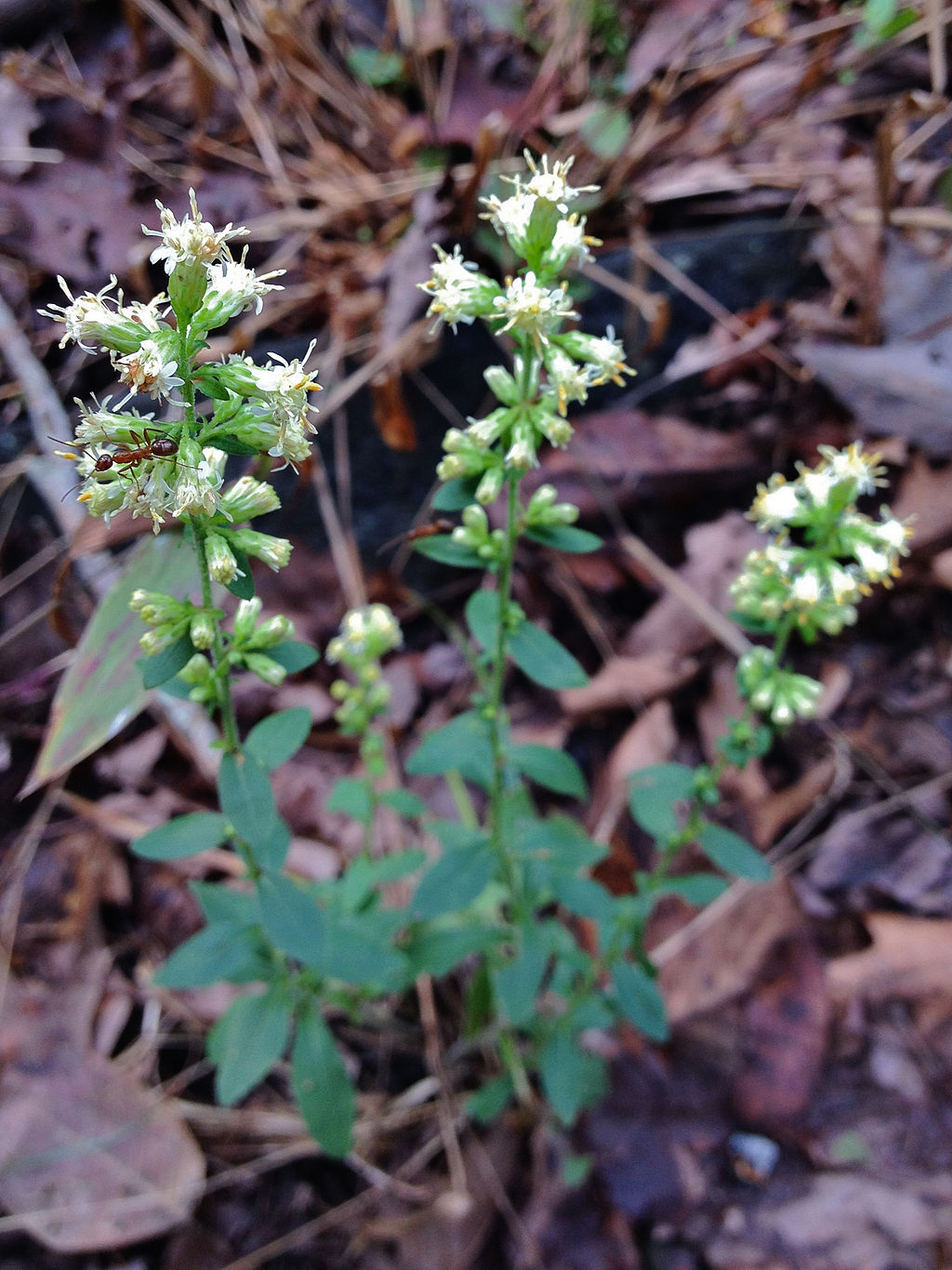
Virginia Pepperweed (Lepidium virginicum)
A substitute for pepper, you can season your cooking or your salads with the unripe seedpods of Virginia Pepperweed. The leaves have a hot-cress flavor and are also packed with vitamin C! Be sure to drink plenty of water alongside it, though—besides needing to quench the heat, Virginia Pepperweed is a diuretic and may dehydrate you if eaten in excess.
Poultices made with Virginia Pepperweed can be used to reduce boils and soothe poison-ivy rashes. It also is reported to help with upper respiratory complaints such as coughs and asthma, though little research has been done on the plant as a whole.
Key identification features
Flowers:
- Grows in elongated clusters
Seeds:
- Fruit forms below the flowers
- Flat, round fruit pods
- Notch in the top of pods
Leaves:
- Spatula-shaped
- Lower leaves are lobed
- Forms a basal rosette
- Alternate up the stem
Here’s how to identify Virginia Pepperweed (Lepidium virginicum)
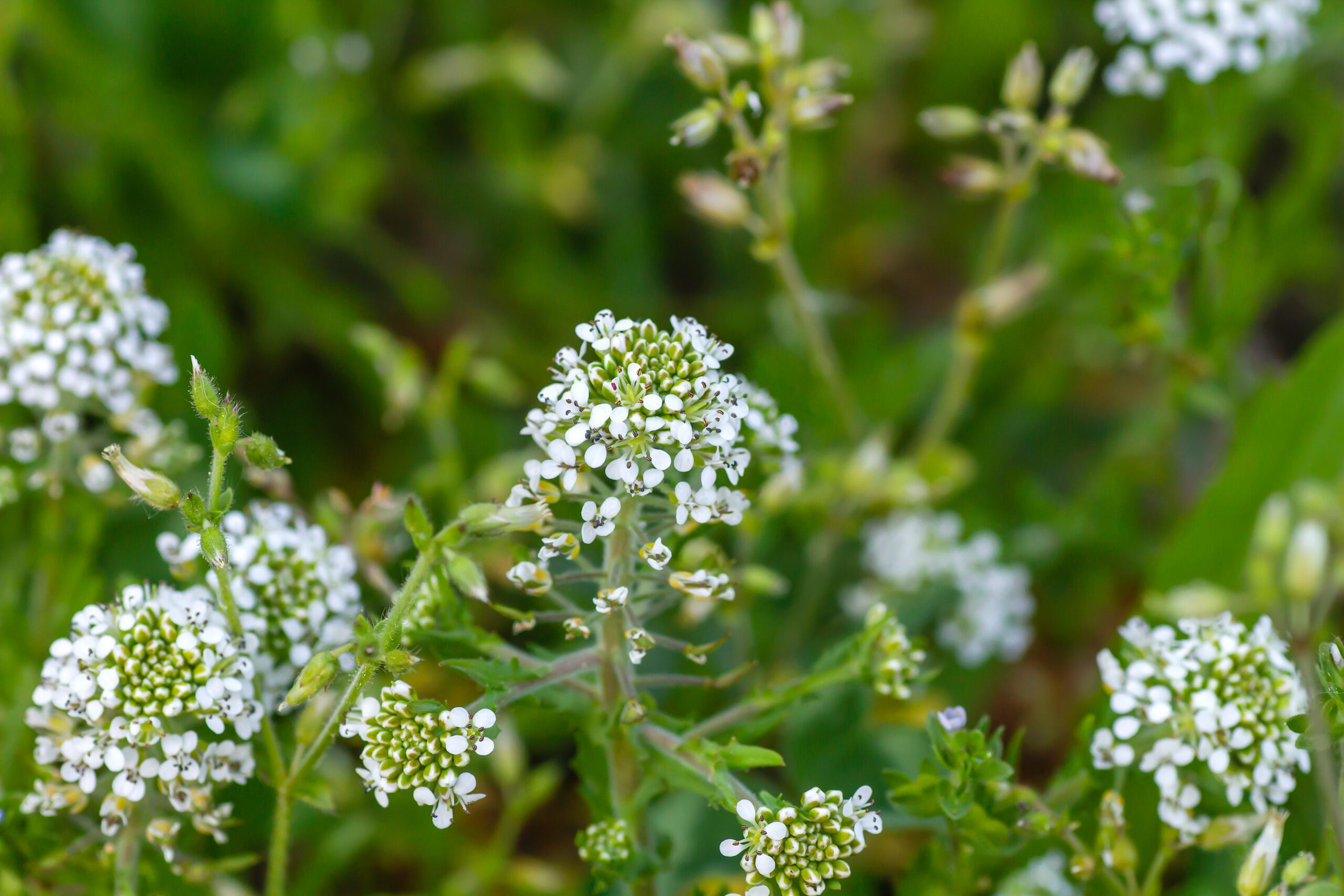
White Campion (Silene spp.)
While described as a highly invasive plant with the potential to become toxic if eaten in large quantities, most of the information about White Campion tends to be a bit vague. It seems that there’s general knowledge about the genus as a whole with little known about individual species, how edible they may be, or which have been used medicinally.
One thing for certain about these plants is that they are useful in making soap, but not the bar or liquid kind. Simply simmer the roots in hot water and then use that water to wash clothes, hair, skin, etc. It doesn’t appear to have any particular scent associated with it.
Key identification features
Flowers:
- Tubular
- 5 petals
- Each is divided into 2 lobes
- Fringe at base of each petal
- Petal fringe creates a ring around the tube opening
- Grow in open-branch clusters
Seeds:
- Forms urn-shaped capsules
- Mouth of “urn” is turned up
- 10 teeth surround opening
- Kidney-shaped black seeds
- Seeds have tiny pimples
Leaves:
- Lanceolate to elliptical
- Lower leaves have short stalks
- Hairy
General:
- Hairy stems
- Upper parts of the plant are sticky
Here’s how to identify White Campion (Silene spp.)

White Clover (Trifolium repens)
Whether used in a tea, salad, soup, or cake, White Clover is an excellent ingredient to have on hand in the kitchen. The leaves are a bit more spinach-like, but when dried they can add a mild vanilla flavor to baked goods. Every part of the plant is edible, though the leaves are usually only harvested before the flowers appear.
If you collect too much White Clover and can’t use it in your kitchen, it makes for an excellent green manure in compost. Don’t use it too often, or you may encounter “clover rot” in your mixes.
While not the most medicinally varied plant on this list, White Clover teas are good for fevers and colds. Tinctures made from it are said to be good for gout when applied as an ointment.
Key identification features
White Clover can easily be mixed up with Wood Sorrel (Oxalic Sp.) based on the plant and flower structure. Check for heart-shaped leaflets with a crease down the middle allowing them to fold in half—these are traits of Wood Sorrel and not any other type of clover.
Flowers:
- Tubular
- Form spherical flowerheads
- 40-100 florets per flowerhead
- Flower stems are leafless
Leaves:
- Round to ovate
- Serrated
- White half-moon or “v”
- Center crease
General:
- Square, aromatic stems
- Forms mats
Here’s how to identify White clover (Trifolium repens)
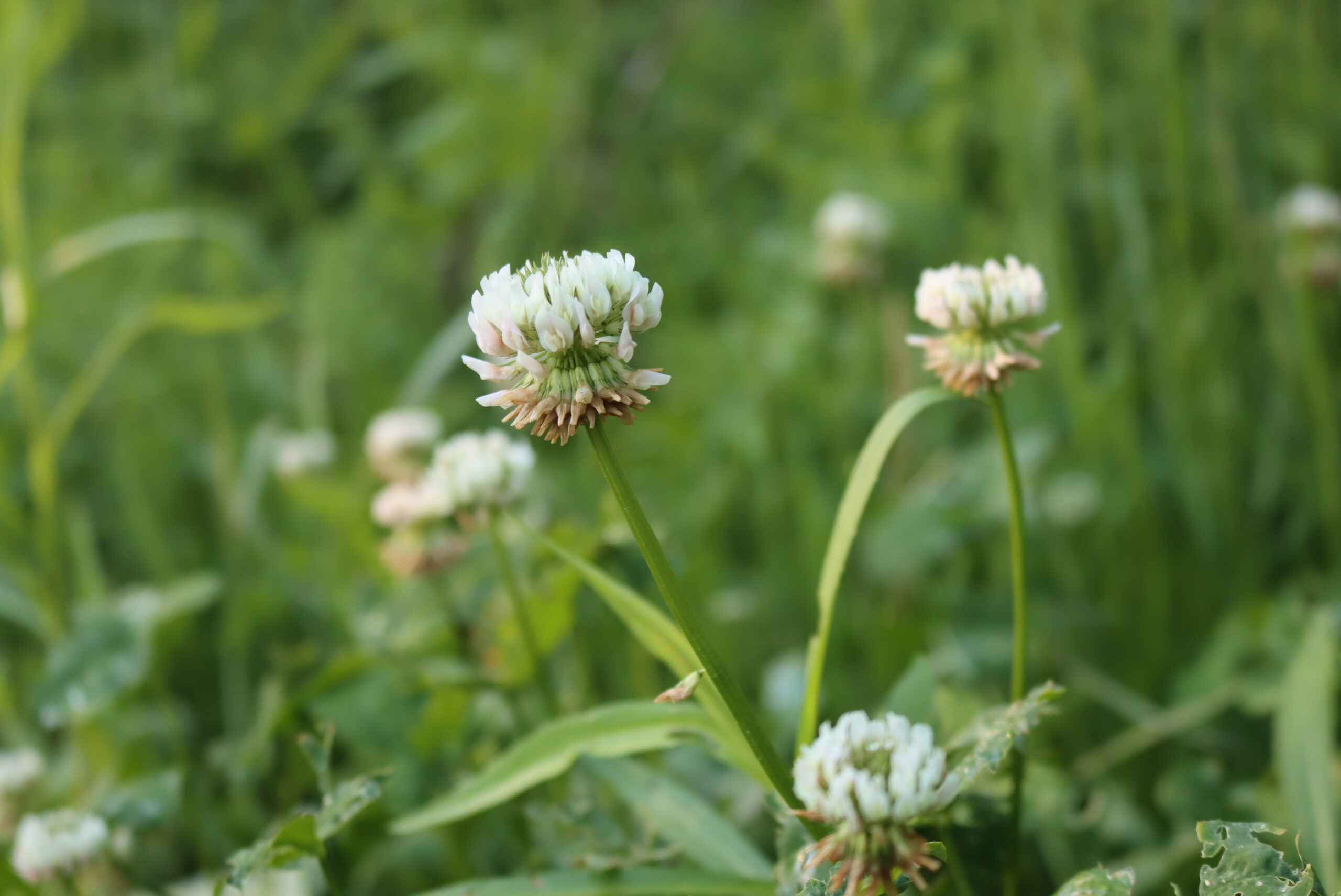
Whitlow Grass (Draba verna)
Not many uses are recorded for Whitlow Grass. The leaves are considered edible when raw, but as I couldn’t find many reports on this as a forage plant, it may be best to assume this is a “famine food” and doesn’t taste particularly well.
The plant is astringent and might be useful in treating diarrhea, sore throats, or ulcers. However, there isn’t any record of it being used consistently for these purposes.
Key identification features
Early in the spring it can be easy to confuse Whitlow Grass with Henbits, Horseweeds, or Shepherd’s Purse as they all are some of the first plants to appear when they frosts stop. However, once they mature for a few weeks, it should be obvious which is which—Whitlow Grass only grows leaves at its base while the others will have some along their stems.
Flowers:
- 4 petals
- Divided into 2
- Appears as 8
- White petals with a yellow base
- Elongated clusters
- 4-20 flowers per cluster
Seeds:
- Forms flat pods
- Oblong pods on stalks
Leaves:
- Only basal
- Spatula-shaped
- 1-2 teeth per side
- Dimpled
- Hairy
Here’s how to identify Whitlow Grass (Erophila verna)

Wild violet (Viola spp.)
Considered a weed purely for how stubbornly they grow in moist soil (think lawns and gardens) and how difficult it is to get rid of them, Wild Violets are a treat to have around if you know how to use them. With edible leaves and delicious flowers, you can enjoy this plant raw or made into jellies, syrup, or salads.
The leaves can also be used medicinally and may be better suited to being made into treatments than eaten (they’re a bit chewy). From cough syrups to soap or salves, you can whip Wild Violet leaves into a variety of forms to treat any kind of irritation you might run into.
Key identification features
Flowers:
- 5 petals
- Rounded star shape
- Top point of the star is downward
Leaves:
- None on flower stalks
- Smooth
- Heart-shaped
- Edges curl in to the center
Here’s how to identify Common Blue Violet (Viola sp.)
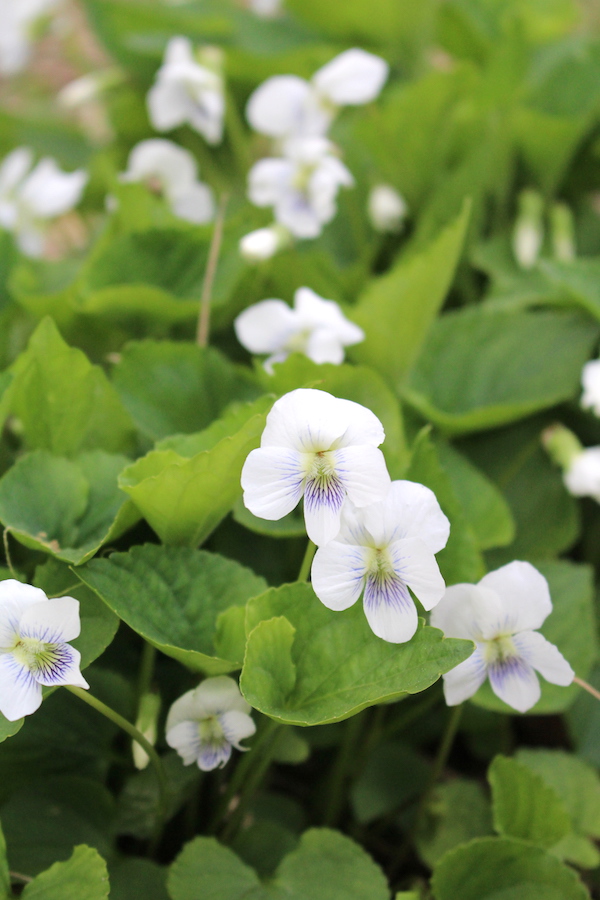
Yarrow (Achillea millefolium)
Cheerfully growing in every state in the US, unless you live in a particularly dry region, you’ll find Yarrow along roadsides or anywhere there’s disturbed soil. Considered weedy and invasive, Yarrow is a great find for herbalists and soap makers alike!
On your skin, Yarrow can be used as an astringent, to treat bleeding, or to treat hemorrhoids (though you may have to combat the smell of cabbage in that area). Internally, it can help lower blood pressure, treat fevers and colds, and even clear up blood clots. Useful in so many ways, perhaps it’s a good thing it grows so aggressively.
Key identification features
Yarrow may be confused for Queen Anne’s Lace (Daucus Carota) from a distance. Up close, it doesn’t share Yarrow’s distinct feathery leaves. Queen Anne’s Lace also smells of carrots when crushed while Yarrow smells more like cabbage.
Flowers:
- 4-5 petals
- Small
- Tight umbel clusters
- Pale yellow centers
Leaves:
- Feathery to fern-like
- Sticky
- Spiral up the stem
General:
- Smells like cabbage
Here’s how to identify Yarrow (Achillea millefolium)
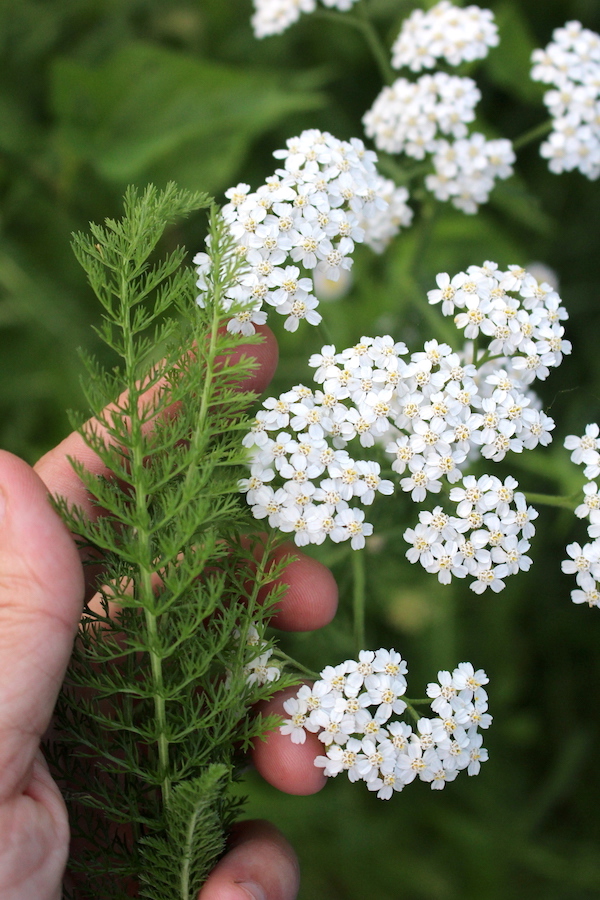
Wild Weed Identification Guides
Looking for more wild weeds?
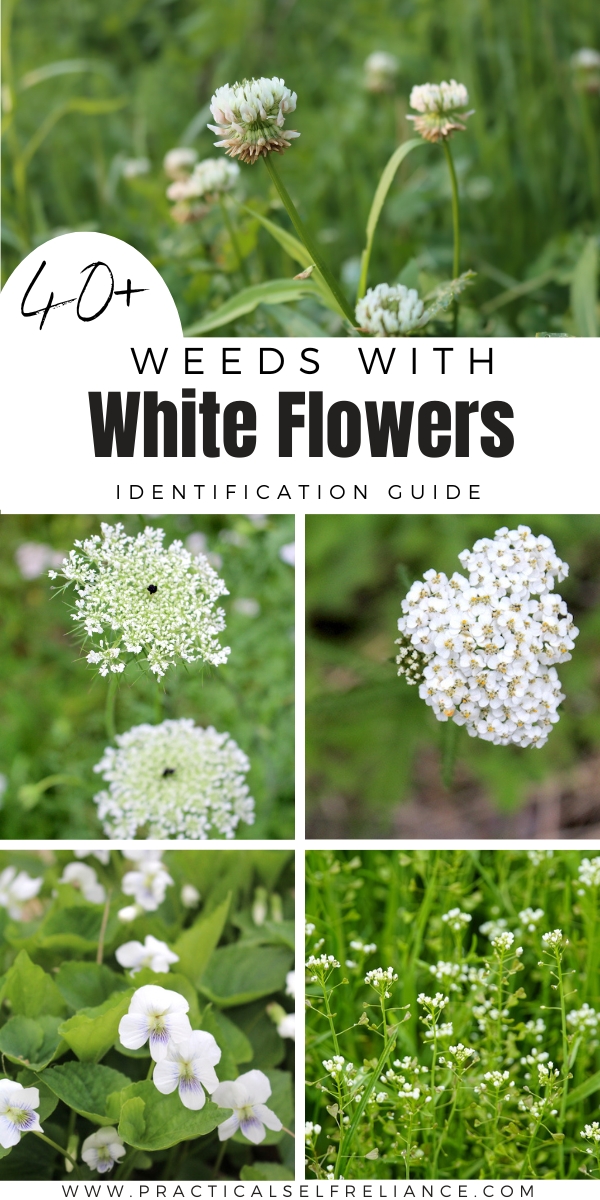
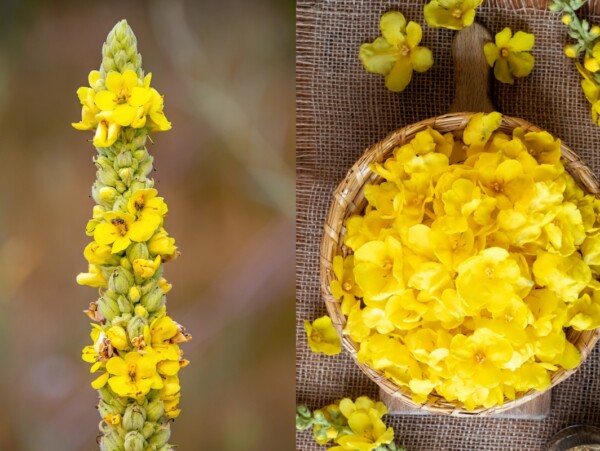
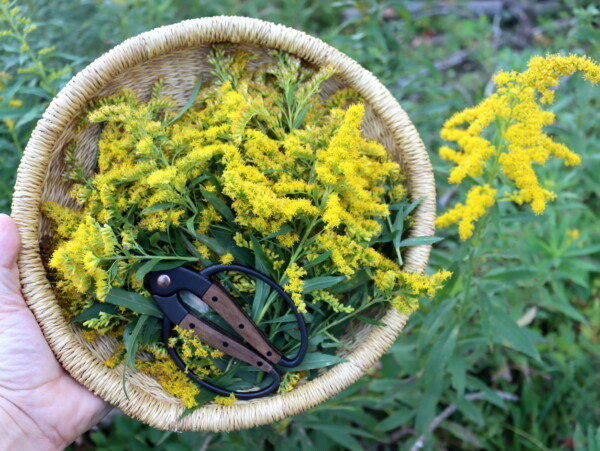
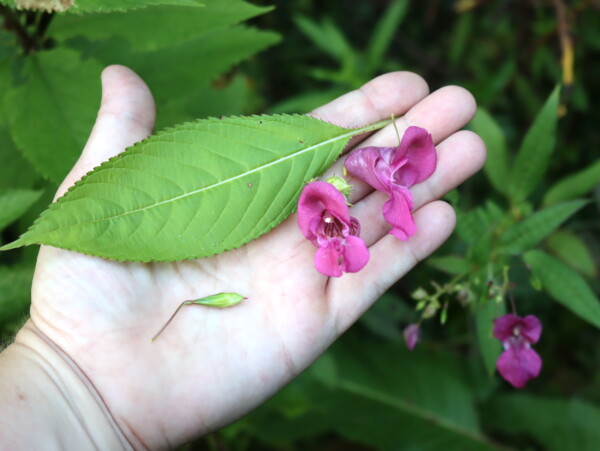
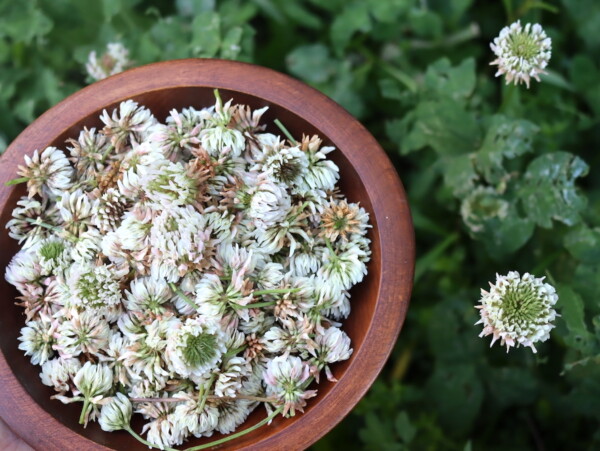










The Garden Valerian flower pic looks exactly like the flower of this low growing woody weed in my yard but after looking at other pics of Garden Valerian I don’t think it is my plant. The dainty flowers do have the feathery(?) wind airborne after flowering but they are so dainty tiny.
thank you for garden valeria ID pic– it is trying to cover my yard
Even though these are weeds to many, I love the flowers! A weed is a plant people don’t want in their gardens, but many of these are attractive to me. I know that Datura can cause extreme realistic hallucinations akin to schizophrenia, can cause blindness as well, and can be fatal. Best not to make a nice cup of tea out of it…but I still like the flowers, subtly creepy looking like they have claws on them!
Looked into this after finding some weeds growing outside of an old abandoned building in Idaho. I liked the scent of them, and found a whole field of them growing! Butterflies seemed to really like them! They had tiny white flowers in a big bunch at the top, I didn’t get a good enough look to identify them though. From afar, the flowers look slightly green tinted.